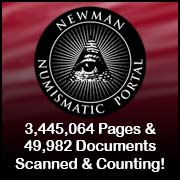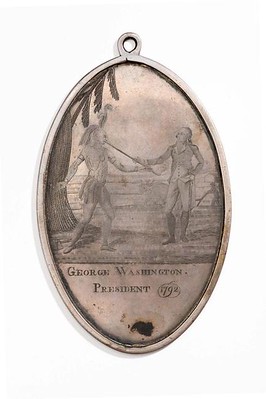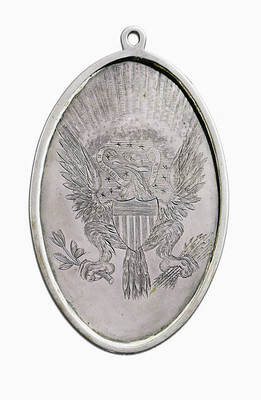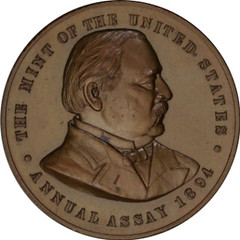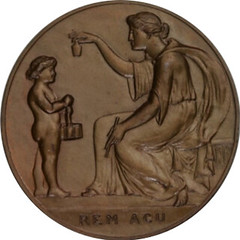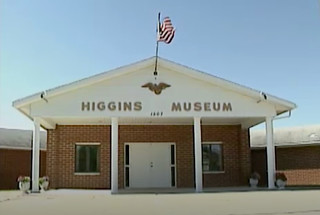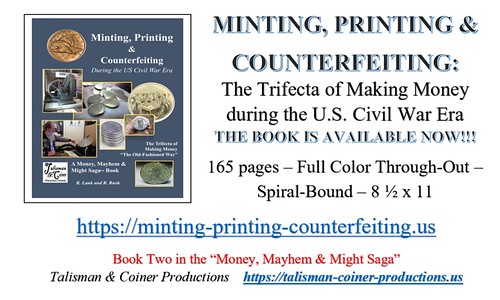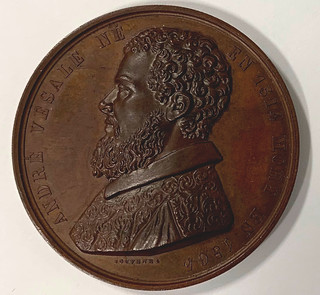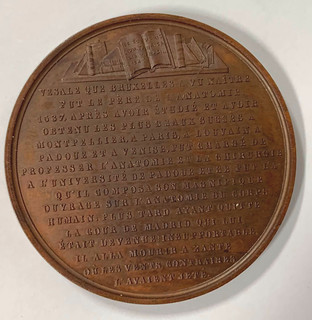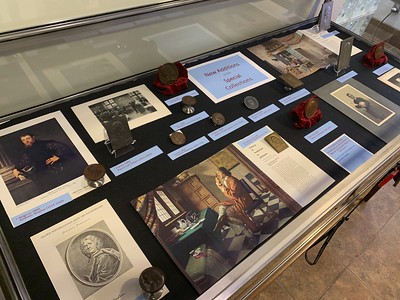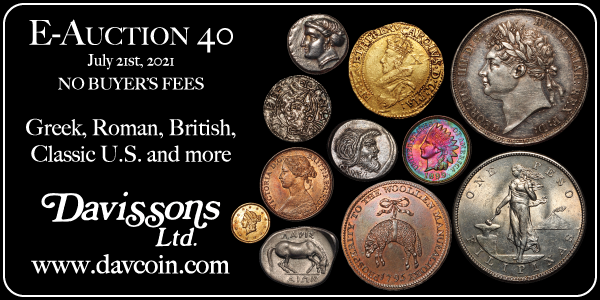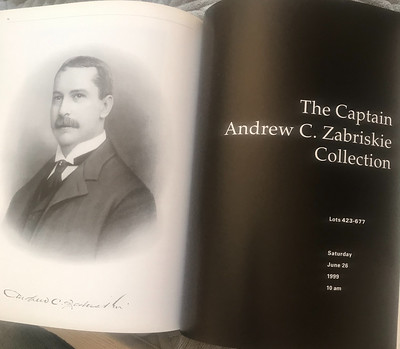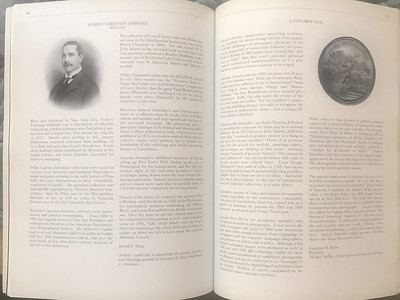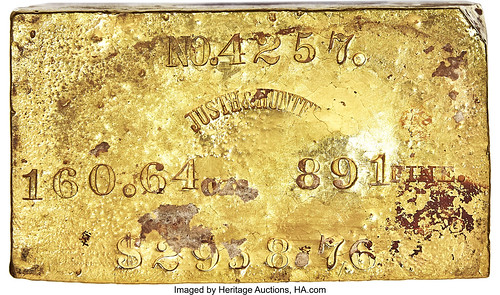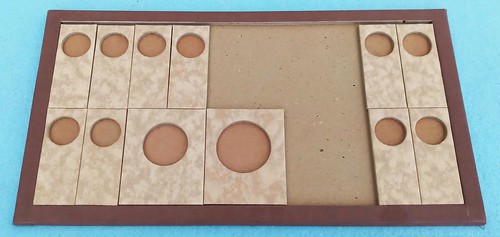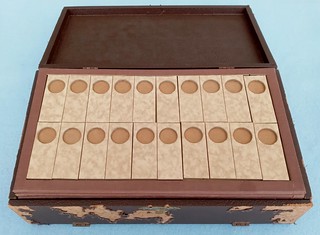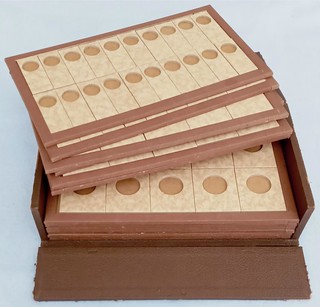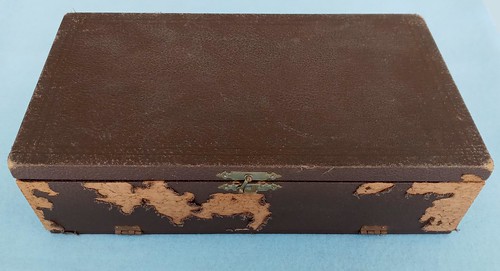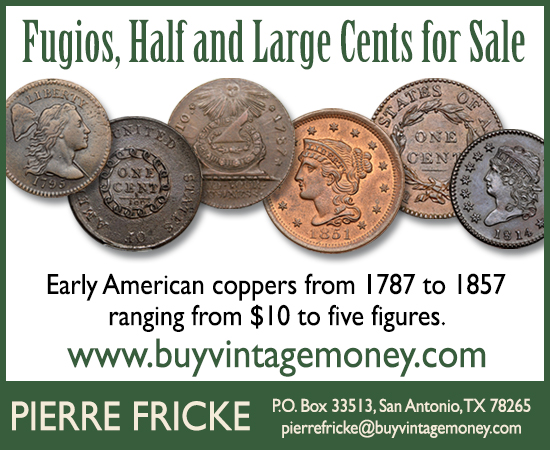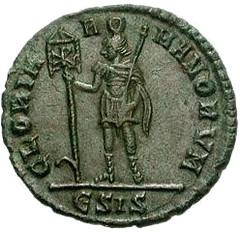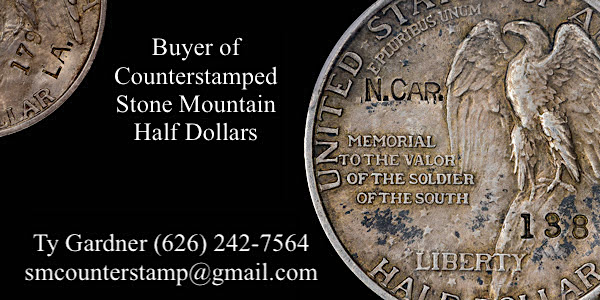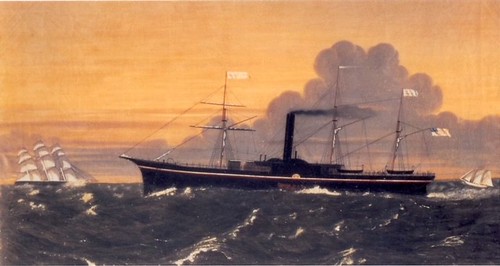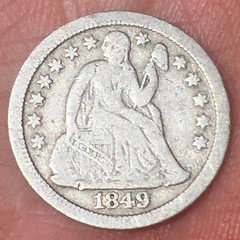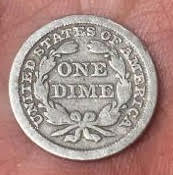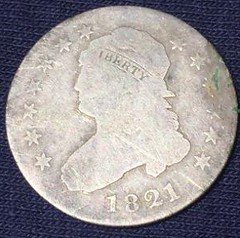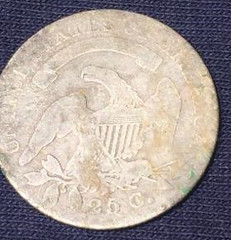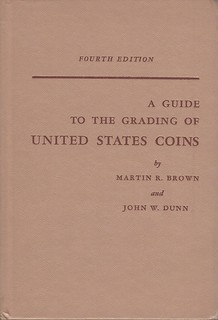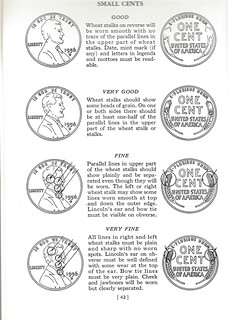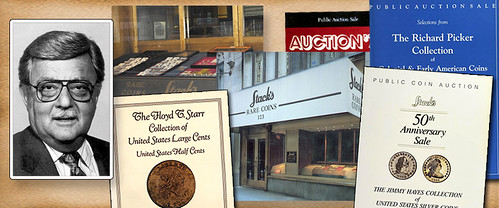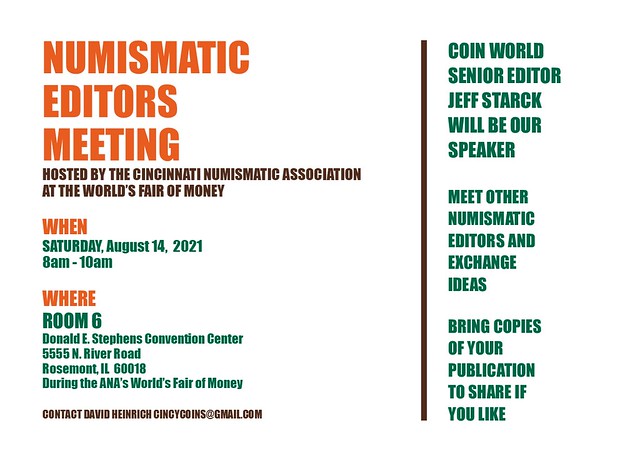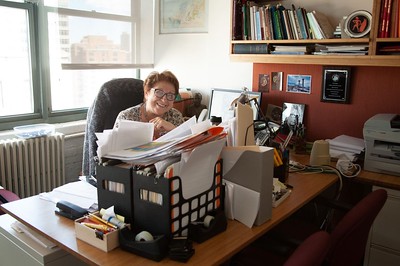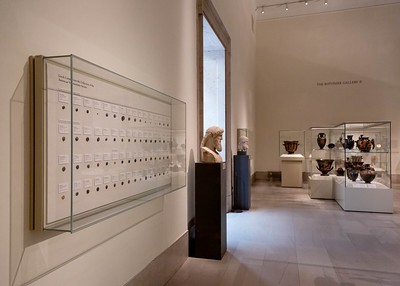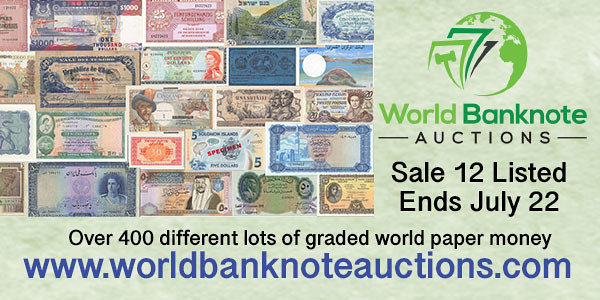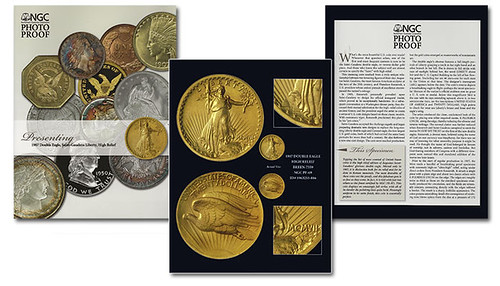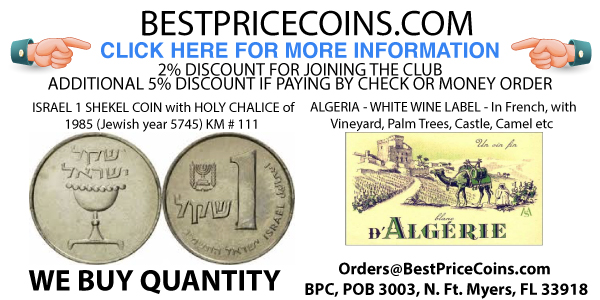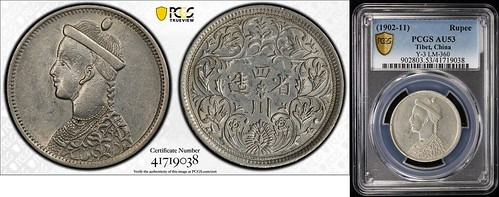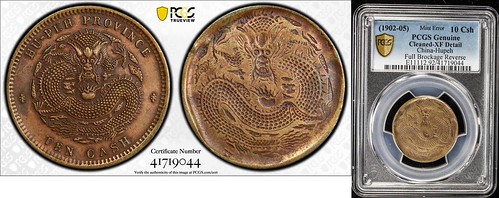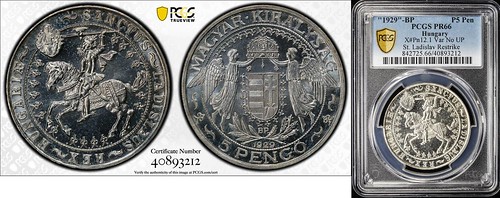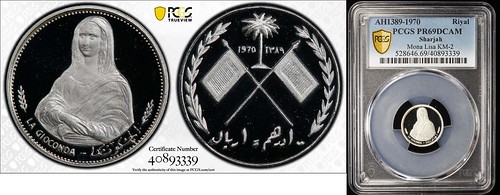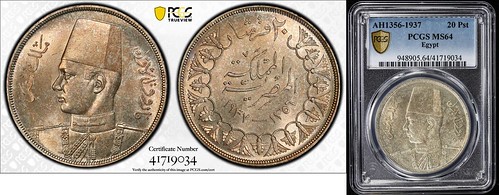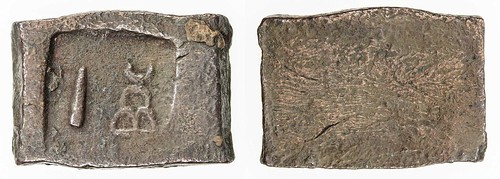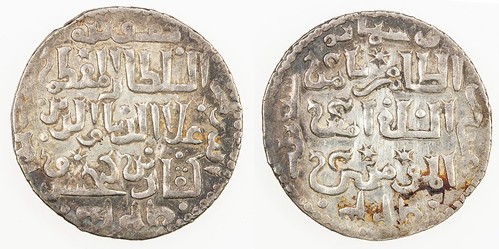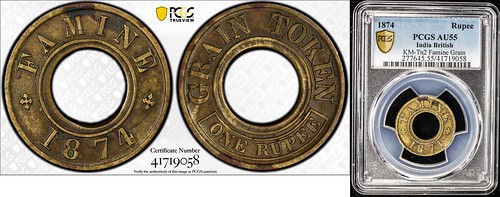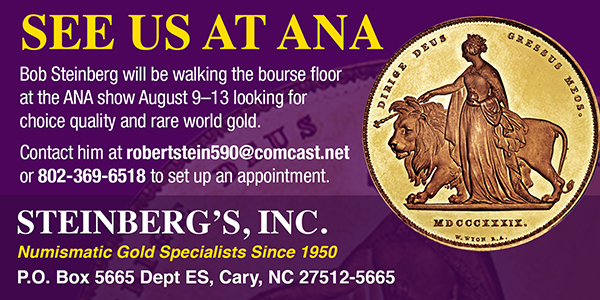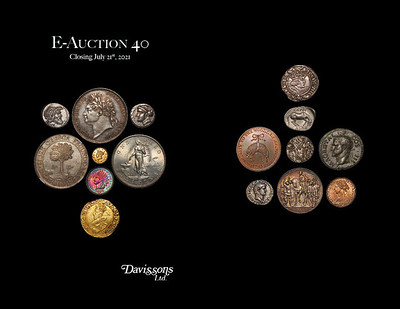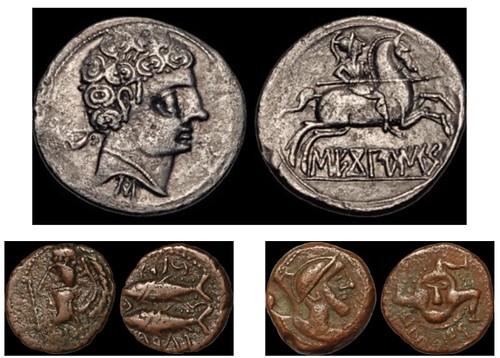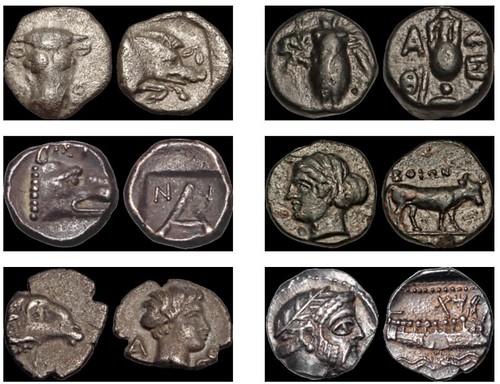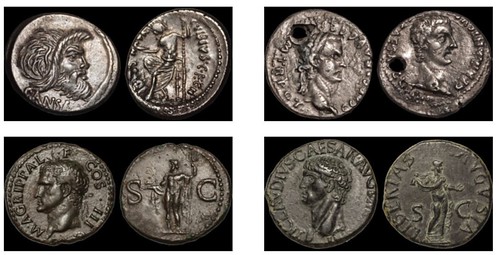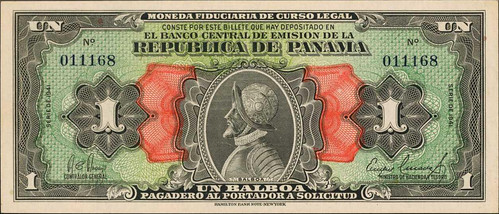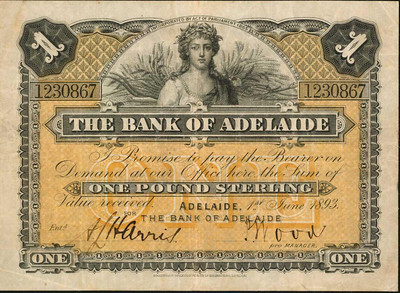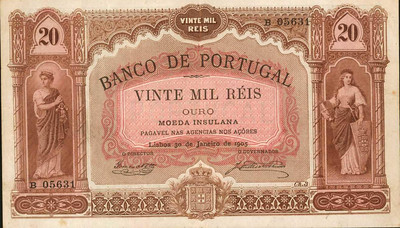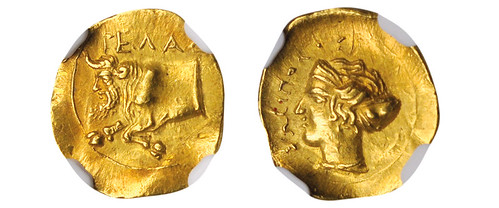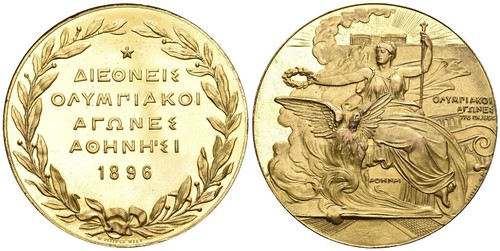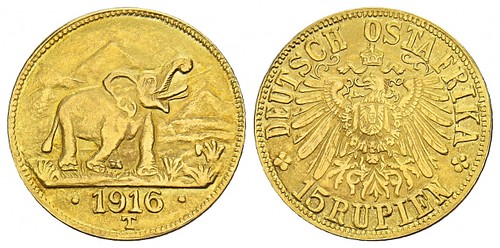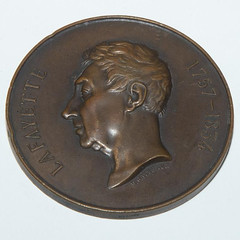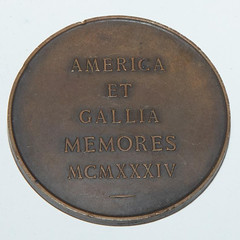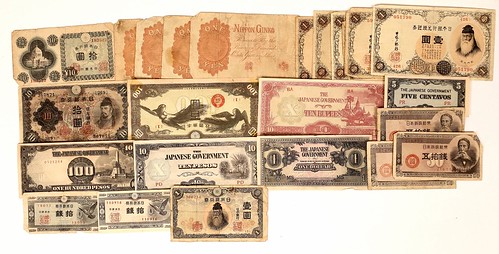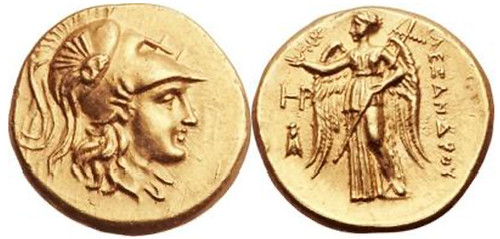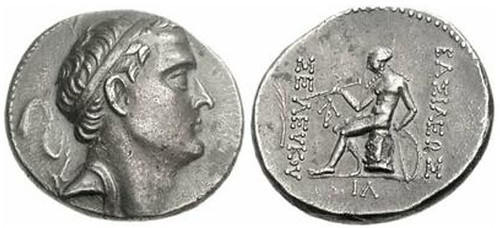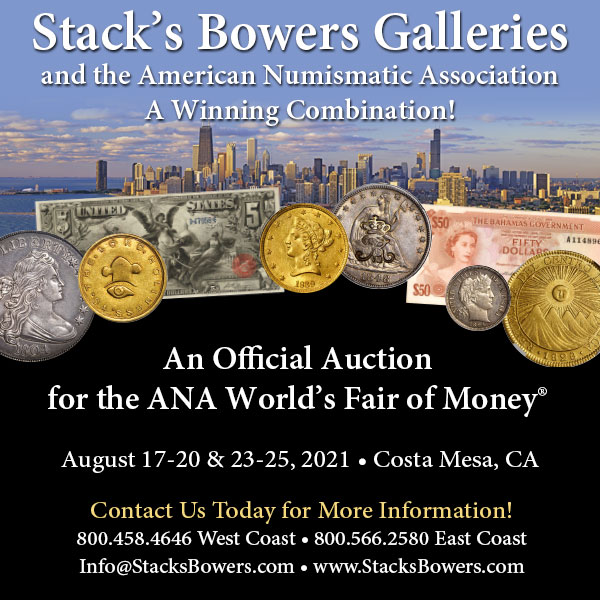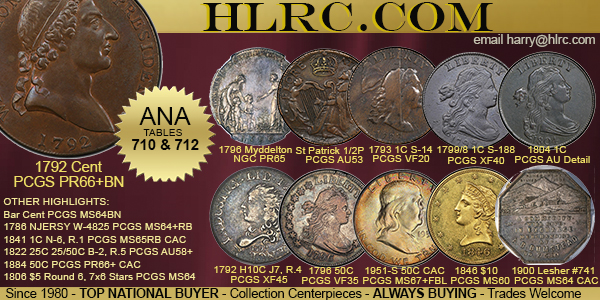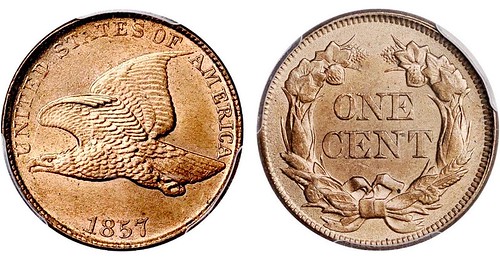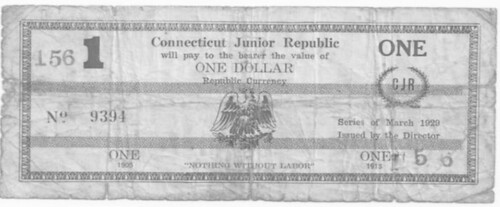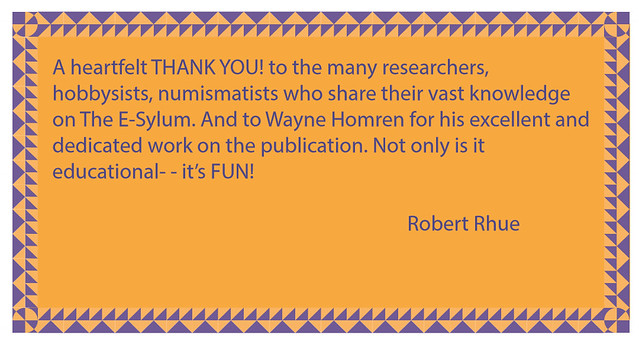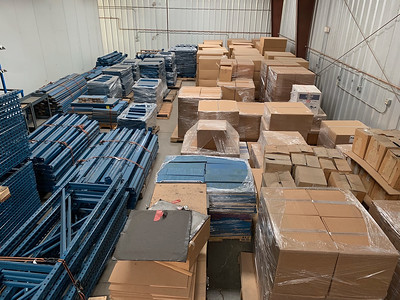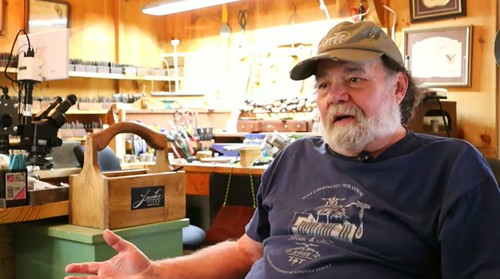
Visit our NBS Sponsors


About UsThe Numismatic Bibliomania Society is a non-profit association devoted to the study and enjoyment of numismatic literature. For more information please see our web site at coinbooks.org SubscriptionsThose wishing to become new E-Sylum subscribers (or wishing to Unsubscribe) can go to the following web page link MembershipThere is a membership application available on the web site Membership Application To join, print the application and return it with your check to the address printed on the application. Print/Digital membership is $40 to addresses in the U.S., and $60 elsewhere. A digital-only membership is available for $25. For those without web access, write to: Charles Heck, Treasurer AsylumFor Asylum mailing address changes and other membership questions, contact Chuck at this email address: treasurer@coinbooks.org SubmissionsTo submit items for publication in The E-Sylum, write to the Editor at this address: whomren@gmail.com BUY THE BOOK BEFORE THE COINSale CalendarWatch here for updates! |
- WAYNE'S WORDS: THE E-SYLUM JULY 18, 2021
- KENNY SAMMUT NUMISMATIC LITERATURE SALE
- NEW BOOK: CONNECTICUT COPPERS (1785-1788)
- CABALLITO VALUATION UPDATE
- COLONIAL WILLIAMSBURG ACQUIRES PEACE MEDAL
- COIN DEALERS AND THE UNITED STATES MINT
- VIDEO: THE HIGGINS MONEY MUSEUM
- FALK LIBRARY MEDICAL MEDALS FOUND
- MORE ON THE ZABRISKIE COLLECTION
- MORE ON EMIL JUSTH
- WAYTE RAYMOND'S "EASY DISPLAY SYSTEM"
- NOTES FROM E-SYLUM READERS: JULY 18, 2021
- 2021 SUMMER FUN SHOW REPORT
- SS CENTRAL AMERICA BELL TO RING AT ANA
- LUCKY COINS OF ROARING CAMP
- VOCABULARY TERM: EXPOSITION MEDAL
- BROWN AND DUNN
- HARVEY STACK'S NUMISMATIC FAMILY, PART 100
- ANS COLLECTIONS MANAGER ELENA STOLYARIK
- 2021 SOWER AWARDS ANNOUNCED
- NGC PHOTO PROOFS
- STEPHEN ALBUM JUNE 2021 E-AUCTION 10 RESULTS
- DAVISSON'S E-AUCTION 40 ANCIENTS
- STACK'S BOWERS 2021 ANA PAPER MONEY SALE
- NUMISMATIC NUGGETS: JULY 18, 2021
- MINTMARKS ON ANCIENT COINS
- ‘FREEDOM TO ZION' COINS FOUND
- 1980 WATFORD ANGLO SAXON COIN FIND
- MORE ON FRENCH COINS FOUND IN POLAND
- THE PIVOTAL YEARS FOR COIN COLLECTING
- THE GEORGE JUNIOR REPUBLIC
- MOVING THE MEDALLIC ART COMPANY ARCHIVES
- LOOSE CHANGE: JULY 18, 2021
Click here to read the thin version on the web
Click here to subscribe
Click here to access the complete archive
To comment or submit articles, reply to whomren@gmail.com
Content presented in The E-Sylum is not necessarily researched or independently fact-checked, and views expressed do not necessarily represent those of the Numismatic Bibliomania Society.
WAYNE'S WORDS: THE E-SYLUM JULY 18, 2021
 No new subscribers to report this week. We now have 6,682 subscribers.
No new subscribers to report this week. We now have 6,682 subscribers.
This week we open with an eBay numismatic literature sale, one new book, a great museum acquisition, updates from the Newman Numismatic Portal, and more.
Other topics this week include the Zabriskie collection, Emil Justh, the Summer FUN show, Exposition medals, the 2021 Sower awards, NGC Photo Proofs, recent and upcoming auctions, mintmarks on ancient coins, and tokens of the George Junior Republic.
To learn more about Connecticut Coppers, Colonial Williamsburg's new medal, coin dealers and the U.S. Mint, the Higgins Money Museum, Wayte Raymond's "Easy Display System," the lucky coins of Roaring Camp, Brown and Dunn, the 1934 Paris Mint Lafayette medal, and what not to do when reading a priceless medieval illuminated manuscript, read on. Have a great week, everyone!
Wayne Homren
Editor, The E-Sylum
KENNY SAMMUT NUMISMATIC LITERATURE SALE
E-Sylum supporter Kenny Sammut recently completed a summer internship at NGC. He published the following note on his blog, noting a big discount on the numismatic books in his eBay inventory. Check out the selection. -Editor
Sadly, my four week internship ended. The time I spent with the great people at NGC was a highlight of my young numismatic career. It was a wonderful experience and I cannot thank everyone enough. Mr. Mark, Mr. Rick, Ms. Pam, Mr. Scott, Keith, Ben and others were so kind with their time and knowledge sharing.
Thank you so much!
It has been a very busy week since I flew back from Sarasota. I have listed over 400 numismatic listings so far this week with the best 200 listings going up today and tomorrow. US & World coins, currency, and #exonumia. All numismatic books and several hundred coins are on sale. I invite you to look. My remaining numismatic books are up to 60% off.
If you do not follow my store, I invite you to click on the follow seller button. You will be made aware of when I add new listings.
To visit Kenny's listings, see:
https://www.ebay.com/str/numismaticswithkenny
NEW BOOK: CONNECTICUT COPPERS (1785-1788)
The Colonial Coin Collectors Club (C4) has published Randy Clark's new book on varieties of Connecticut Coppers. Here's the information from the club's website. Both of C4's authorized distributors, Charlie Davis and Kolbe & Fanning, have the book in stock and available on their respective websites. -Editor
The Identification and Classification of Connecticut Coppers (1785-1788)
Randall P. (Randy
) Clark
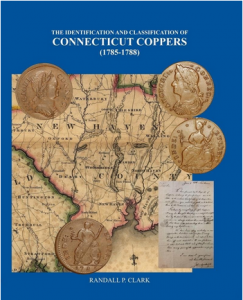 With this book, Randy has filled a century long gap in the availability of a concise and thorough study of the Connecticut Coppers series. This is the first book in 100 years to focus solely on Connecticut Coppers, with enough depth, images and technical details to help specialists and casual collectors alike, dive into details of the series.
With this book, Randy has filled a century long gap in the availability of a concise and thorough study of the Connecticut Coppers series. This is the first book in 100 years to focus solely on Connecticut Coppers, with enough depth, images and technical details to help specialists and casual collectors alike, dive into details of the series.
Beginning with a 128 page historical overview of the series and its collecting history, this book then provides 576 pages of large sized photographs of every die, both obverse and reverse, known as of publication. For collectors of the Connecticut series, this alone is an unbelievable tool. This book now provides collectors with a single source for historical and attribution information which previously had to be cobbled together from myriad sources.
This work represents the 13th book which C4 has partnered with the author(s), to bring to print.
To read the complete article, see:
https://colonialcoins.org/publications/
For more information, or to order, see:
Clark: The Identification and Classification of Connecticut Coppers (1785-1788)
(https://www.vcoins.com/en/stores/charles_davis/44/product/
clark_the_identification_and_classification_of_connecticut_coppers_17851788/
1503505/Default.aspx)
THE IDENTIFICATION AND CLASSIFICATION OF CONNECTICUT COPPERS (1785–1788).
(https://www.numislit.com/pages/books/6507/randall-p-clark/the-identification-and-classification-of-connecticut-coppers-1785-1788)
Thank you for reading The E-Sylum. If you enjoy it, please send me the email addresses of people you think may enjoy it as well and I'll send them a subscription. Contact me at whomren@gmail.com anytime regarding your subscription, or questions, comments or suggestions about our content. -Editor
CABALLITO VALUATION UPDATE
Author Allan Schein submitted this pricing update to his Caballito book. Thanks! -Editor
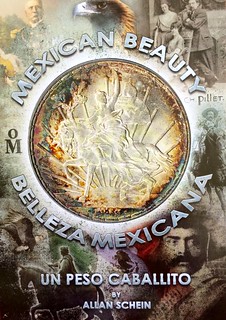 Six years ago I published the book MEXICAN BEAUTY / BELLEZA MEXICANA, Un Peso Caballito. In that time I have sold a bit over a thousand books, and have seen the coins dry up and prices increase dramatically. This change in popularity was long overdue for such a beautifully designed crown sized coin, and is both good for the series and the hobby but makes it little tougher to find and afford nice coins due to fresh competition.
Six years ago I published the book MEXICAN BEAUTY / BELLEZA MEXICANA, Un Peso Caballito. In that time I have sold a bit over a thousand books, and have seen the coins dry up and prices increase dramatically. This change in popularity was long overdue for such a beautifully designed crown sized coin, and is both good for the series and the hobby but makes it little tougher to find and afford nice coins due to fresh competition.
Along with the extreme swings in popularity and availability of a series come the opportunists who make exaggerated claims about both value and availability. It may be an historically strong market but not everything has soared in value. Having written the book on this series and am told I make the market in these coins I think I have a pretty good handle on values. At this time that I am making available a guide chart of fair market values for PCGS and NGC graded Caballitos. This is only a guide to update the data in the book. Individual coins will always vary somewhat in pricing depending on the coin and the dealer. There is no other source with current reliable pricing information available. Our industry mainstay KRAUSE has not updated their Caballito Peso data to my knowledge for 30 years or more. Although I tried more than once to get them to make adjustments.
We're in a bit of a bubble at the moment which I believe will resolve itself over the next year as dealers and coins begin to travel and flow again and prices stabilize. Valuations by grade have been updated for the chart that appears on page #173 of the Caballito book to reflect the current market. I encourage all Caballito collectors to pay attention to these updated valuations. For 10 years I have followed and noted every Caballito sale I was aware of and although we are at all-time high prices for some dates and grades, I do believe the current pricing bubble will stabilize in the near term. Claims that prices have tripled are false, although some have doubled. Claims that coins can't be found are false, as more are being sold presently than in any other recent year. But you will have to look around to find what you want because of the increased popularity.
To read the earlier E-Sylum article, see:
NEW BOOK: MEXICAN BEAUTY: MEXICO'S CABALLITO PESO
(https://www.coinbooks.org/esylum_v17n44a05.html)
COLONIAL WILLIAMSBURG ACQUIRES PEACE MEDAL
Colonial Williamsburg announced its acquisition of a small size 1792 George Washington Indian Peace Medal. Congratulations! -Editor
When George Washington was inaugurated as the first President of the United Sates 232 years ago in April 1789, the nation's leaders were well aware that peace medals
given as diplomatic gifts to American Indian leaders had vital impact. Considered to be of paramount historical significance and the highest rarity, most of the authentic engraved Indian peace medals of the Washington presidency are found in institutional collections; of the medals made in 1792, the first year they were issued and awarded primarily to Southern Chiefs, perhaps a dozen are known. Colonial Williamsburg has recently acquired one the finest of only approximately six small-sized medals currently recorded.
Crafted in Philadelphia, Pennsylvania, of silver by an unidentified silversmith, this Washington Indian peace medal is 5-1/4 tall by 3-3/16 wide and weighs 76.15 grams. The medal is now on view in the Backcountry section of A Rich and Varied Culture: The Material World of the American South, a long-term exhibition at the DeWitt Wallace Decorative Arts Museum, one of the newly expanded Art Museums of Colonial Williamsburg.
Acquisition of this well-preserved medal provides Colonial Williamsburg an outstanding opportunity to interpret the story of relationships between the United States government and the American Indian nations residing in the southern states,
said Ronald L. Hurst, the Foundation's Carlisle H. Humelsine Chief Curator and vice president for museums, preservation, and historic resources. It also advances our long-standing determination to ensure that the collections represent the diversity of the early American population.
The custom of giving peace medals has a long history in America. By the French and Indian War, Anglo-Americans began producing impressive medals in hopes of competing against varied European interests for the allegiance of diverse Native American groups. These include medals commissioned by the Quakers struck in Philadelphia for the 1757 Treaty of Easton and Virginia's Happy While United
medals of 1780.
The newly formed War Department staff, responsible for overseeing Indian affairs, found it challenging to procure these indispensable silver medals. Without the necessary minting machinery, each had to be handmade and painstakingly engraved by expert craftsmen in order to convey the importance embodied in these large, high-quality medals. The work was time consuming and expensive, but the United States government considered it worth the price as they were enthusiastically appreciated by the recipients.
In 1792, a spectacular design was created that began the custom of featuring a prominent image of the sitting president on the front of the medal. This tradition continued for nearly a century until the Indian peace medal program ended in 1891. The new design, which was very large and oval, presented a view of George Washington helping to support a pipe being smoked by a traditionally dressed American Indian warrior. On equal footings, the president appears in his military uniform while his ally wears armbands, a feathered headdress and a large oval medal around his neck. Behind the warrior rests his tomahawk placed on the ground. This peace ceremony is depicted at the edge of a wood with the warrior below the branches of a tree and Washington before an agricultural scene. Below is the legend GEORGE WASHINGTON, PRESIDENT 1792. The reverse side features an engraving of the Great Seal of the United States.
I can't put into words how thrilled I am to be adding this incredibly rare medal to Colonial Williamsburg's holdings,
said Erik Goldstein, Colonial Williamsburg's senior curator of mechanical arts & numismatics. Though it fills a tremendous void in the collection, I never thought it would be possible, and the fact that it's of the finest style is just icing on the cake.
Production of the large format oval medals ended in 1795, likely because of the expense and difficulty of having them hand-made, perhaps compounded by an increasing need for them. Today, the engraved Indian peace medals of George Washington's presidency remain at the pinnacle of early American numismatic and historical treasures.
This acquisition was made possible through Colonial Williamsburg's Lasser Numismatics Fund.
To read the complete article, see:
Rare George Washington Indian Peace Medal Acquired by the Colonial Williamsburg Foundation
(https://www.artfixdaily.com/artwire/release/5320-rare-george-washington-indian-peace-medal-acquired-by-the-colonia)
To read an earlier E-Sylum article, see:
PARTRICK COLLECTION INDIAN PEACE MEDALS
(https://www.coinbooks.org/v24/esylum_v24n28a27.html)
COIN DEALERS AND THE UNITED STATES MINT
Newman Numismatic Portal intern Garrett Ziss provided the following article based on recently added digital content. Thanks! -Editor
National Archive letters from the late 19th and early 20th centuries reveal that the United States Mint
maintained business relationships with coin dealers and also followed their activities. The Mint often
used contemporary coin sale results to determine monetary offers for numismatic items they wished
to purchase for the Mint Cabinet. In addition, dealers often proposed trading numismatic items with
the Mint in order to further their interests. For example in 1894, The Scott Stamp & Coin Company of
New York City sent two medals to the Mint for their Cabinet, with the expectation that in return, the
Mint would supply a specimen of the last Assay Medal with [a] bust of Cleveland
for their customer,
John F. McCoy. McCoy was apparently still acquiring numismatic items even though his impressive
collection was auctioned off 30 years earlier.
Coin dealers also used their relationship with the Mint to obtain specific proof sets or coins not readily available in circulation. In 1889, prominent Philadelphia dealers S. H. & H. Chapman ordered 75 proof sets of that year and their request was granted. However, dealers were not always successful with their petitions.
 In 1922, Henry Chapman, who was no longer a
partner with his brother, Samuel Hudson, sought examples of all
U.S. denominations dated 1922. This is not surprising, as the Mint
only struck cents, dollars and double eagles for circulation that year
due to excess inventory of other denominations. Chapman made
his appeal to President Harding on October 18, 1922. His letter was
referred to executive Mint clerk Mary Margaret O'Reilly, who
despite the lack of a proper title oversaw Mint operations for the
much less experienced Director, Frank E. Scoby. She informed Mr.
Chapman that
In 1922, Henry Chapman, who was no longer a
partner with his brother, Samuel Hudson, sought examples of all
U.S. denominations dated 1922. This is not surprising, as the Mint
only struck cents, dollars and double eagles for circulation that year
due to excess inventory of other denominations. Chapman made
his appeal to President Harding on October 18, 1922. His letter was
referred to executive Mint clerk Mary Margaret O'Reilly, who
despite the lack of a proper title oversaw Mint operations for the
much less experienced Director, Frank E. Scoby. She informed Mr.
Chapman that
This Bureau appreciates the interest you are taking
in in the matter of numismatics and your desire to have preserved
a uniform collection of the coins of this country, but it is not in our
power to take any action which will result in the coinage of a
limited number of new coins for collection purposes.
Chapman requested these coins 3 additional times and was denied by the Mint each time.
Image: 1894 United States Assay Commission Medal MS63 Brown Uncertified; ex. Heritage Auctions 9/16/2006, lot 6593, realized $402.50.
Image: Mary Margaret O'Reilly (Image Courtesy of the Treasury Department)
Letter from Scott Stamp & Coin Co. to Superintendent of the Mint Bosbyshell:
https://archive.org/details/scottdonatestwomedalsmccoymedal18940326/mode/2up
John F. McCoy Collection Catalog:
https://nnp.wustl.edu/library/auctionlots?AucCoId=29&AuctionId=511184&page=32
Correspondence regarding Chapman Brothers Request for Proof Sets of 1889:
https://archive.org/search.php?query=creator%3A%22U.S.%20Mint%22%20chapman%20minor
Correspondence regarding Henry Chapman Request for Coins of 1922:
https://archive.org/search.php?query=creator%3A%22U.S.%20Mint%22%20o%27reilly
VIDEO: THE HIGGINS MONEY MUSEUM
These are selections from the David Lisot Video Library that feature news and personalities from the world of coin collecting. David has been attending coin conventions since 1972 and began videotaping in 1985. The Newman Numismatic Portal now lists all David's videos on their website at:
https://nnp.wustl.edu/library/multimediadetail/522852
Here's one on the Higgins Money Museum. -Editor
The Higgins Money Museum in Okoboji, Iowa has one of the largest collections of national bank notes in the world. Hear the story of this museum and the tale of this era of paper money.
Producer, David Lisot.
The video is available for viewing on the Newman Portal at:
https://nnp.wustl.edu/library/book/560345
FALK LIBRARY MEDICAL MEDALS FOUND
Gosia Fort has been keeping E-Sylum readers informed about the Medical and Scientific medals collection at the Falk Library, part of the Health Sciences Library System at the University of Pittsburgh, where she is Head of Digital Resource Development. She made a great discovery in the library files - a number of medals previously missing. -Editor
Ten years ago, I told the readers of The E-Sylum of an unusual discovery of medals in the library offsite storage. I made some assumptions at that time, which passing time corrected. Since I researched, described, and mounted an online exhibit of these medals in 2014, I know now that my declaration in 2012, December 23rd issue of The E-Sylum that some medals have no ties to medicine was premature. I just could not see the connection at the time I wrote the announcement.
The most obvious example is medal of famous German poet, Johann Friedrich von Schiller, who had a medical degree and worked for several years as physician before changing his career. Another speculation I made was to suggest that some of the missing medals had been sold before the rest of the collection was donated to the library. They were not! Last month I made a new discovery that proves how far off was my guess.
Before we had internet and Google search to rely on, librarians had many home-grown resources to assist them in searches for patrons. One of these useful tools from the past is an old reference file of portraits of famous physicians, organized alphabetically by name. It is not used anymore, but we still keep this vast assembly of images gathered by the former Falk Library librarians in our historical collections.
The boxes with hundreds of folders with images were moved (together with the rest of rare books and special collections) to the newly renovated space just before the pandemic-related closure of the library. Last month I noticed that labels for this collection had faded so much they are not readable anymore. Recreating labels required opening each box to read folder names. Digging into folders was not necessary. However, since I was working on a project about Andreas Vesalius, I could not resist opening his folder. I am glad I did, because this is how I discovered a bronze medal commemorating the father of modern anatomy. I found not only a medal but also a topic for my next library newsletter article!
While working on it, I realized that it is one of the missing medals and I decided to go back to the portrait file and check folders for others. Acting on a hunch to check for all previously missing
medals was worth all the work. I found 14 medals commemorating the greatest names in medicine and biological sciences buried in the portrait file. They are no longer missing! They are on display in the Falk Library lobby. In the fall, we will describe, photograph, and add them to our online exhibit of Medical and Scientific Medals at Falk Library.
That's great news! Readers in the Pittsburgh area are encouraged to visit the lobby exhibit. -Editor
To view the online exhibit, see:
Medical and Scientific Medals at Falk Library
(https://www.hsls.pitt.edu/medical-and-scientific-medals)
To read the earlier E-Sylum articles, see:
QUERY: MEDICAL MEDAL DONOR IDENTITY AND NEW DONORS SOUGHT
(https://www.coinbooks.org/esylum_v15n53a16.html)
VIDEO: MEDICAL AND SCIENTIFIC MEDALS AT FALK LIBRARY
(https://www.coinbooks.org/esylum_v18n26a13.html)
MORE ON THE ZABRISKIE COLLECTION
Last week we discussed collector Capt. Andrew Zabriskie. Although his primary coin collection was sold by Henry Chapman, another sale took place at a much later date, as told by reader Alan V. Weinberg. Thanks! -Editor
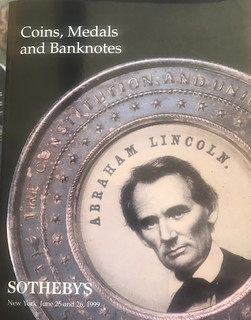 I enjoyed the brief biography of Captain Andrew Zabriskie, but a significant and in our readers' lifetime
I enjoyed the brief biography of Captain Andrew Zabriskie, but a significant and in our readers' lifetime
Zabriskie event
was not covered and it is not widely known within the numismatic community. I consider it the most major
but little known numismatic
auction of modern times aside from the PA Pennypacker large cent sale of the 1950s.
It is true that while Zabriskie's American numismatic collection, including seven Higleys and a gold Brasher Doubloon, was
auctioned by Henry Chapman in 1909, his first love
of political exonumia specializing in Lincoln campaign items was kept
in a closeted box for almost a century by his descendants, considered of nominal value. They brought it into Sotheby's NYC
auction house in 1999 and learned differently.
The most significant auction offering of choice Lincolniana, with many additional top condition rare tokens and medals formed by the Captain appeared on June 26, 1999 lots 423- 677 in NYC by Sotheby's, Catalogue only available for $29, a not inconsiderable auction catalogue price in 1999. The sale was not widely publicized nor attended, certainly not in numismatic circles.
Dominating the auction offering were Steve Tanenbaum with partners, and Larry Stack with Mike Hodder assisting. The sale was inadvertently scheduled opposite a major political ephemera show in the Baltimore area which resulted in many potentially interested bidders, like me, unable to attend the NYC auction.
Still, in the main, prices realized were, for the time, astounding. Cataloguing was done by the very knowledgeable Jonathan Mann and Dan Ackerman ( the latter just retired from Heritage's political/ historical dept ) so lots were quite adequately described and attributed. Most lots were adequately plated and there were several full color plates. The catalogue's cover plate, an 1860 Lincoln ferrotype in a mechanical brass calendar medal realized $38,500, an astonishing price even today. It may be unique as neither this nor another has re-appeared on the market since. The overall quality of everything was as-issued and pristine, collected by Zabriskie as an apparently very wealthy young man who witnessed the 1864 pre-inaugural parade on Fifth Ave and five weeks later the funeral post-assassination procession on the same avenue.
Even today the 1999 Sotheby's Zabriskie catalogue is quite rare, particularly so with original prices realized. I didn't miss out too badly. Shortly after the sale, I acquired several rare medals from the sale directly from Larry Stack and later several impressive ferrotypes from collector Scott Dolson who had in turn acquired those from Stack's. Sadly, much of Scott's collection was later stolen in a devastating residential KY burglary, the vast majority still missing.
To read the earlier E-Sylum article, see:
CAPT. ANDREW CHRISTIAN ZABRISKIE (1853-1916)
(https://www.coinbooks.org/v24/esylum_v24n28a14.html)
MORE ON EMIL JUSTH
Tom Harrison writes:
"I wanted to add a note regarding the addenda to the H.G. Sampson sale of the Emil Justh collection. Besides the addenda noted by George Kolbe in the Harry Bass sale 5 (3-10-01, lot 1028) another one appeared in the Bass sale 2 (6-5-99, lot 512). This copy is in a bound volume of 20 Sampson catalogs. Bass purchased this volume from the Katen sale of the George Fuld library (11-27-71, lot 1364) where he was an aggressive buyer. It sold for $27.50 on an estimate of $125. I purchased the volume when it resurfaced in the Kolbe & Fanning sale 143."
Dave Hirt writes:
"By the way, Emil Justh was a San Francisco assayer during the gold rush days. I believe that gold bars with his name on them are known."
As it happened, a Heritage press release including a Justh & Hunter gold bar just missed the cut for last week's issue. That's a great reason to publish it here. Thanks, everyone. -Editor
Strike Gold With Fabulous Shipwreck Bars in July Auction
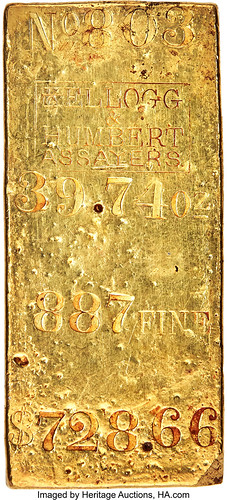 Gold stackers and shipwreck collectors, rejoice! Heritage Auctions will be selling two great pieces of shipwreck history as part of the July US Coin Auction #1332. The S.S. Central America shipwreck occurred in the 1850s and forever changed numismatic history. This 280-foot sidewheel ship regularly operated between Central American and the eastern coast of the United States in the 1850s until a hurricane in 1857 sunk the mighty boat, weighed down heavily with a huge treasure of gold coins and bars.
Gold stackers and shipwreck collectors, rejoice! Heritage Auctions will be selling two great pieces of shipwreck history as part of the July US Coin Auction #1332. The S.S. Central America shipwreck occurred in the 1850s and forever changed numismatic history. This 280-foot sidewheel ship regularly operated between Central American and the eastern coast of the United States in the 1850s until a hurricane in 1857 sunk the mighty boat, weighed down heavily with a huge treasure of gold coins and bars.
Rather than these pieces arriving to their destination and being used in commerce, they sat for years at the bottom of the ocean--primarily in uncirculated condition but covered in corrosive seawater. Thanks to careful expeditions of divers with new technology and gentle conservation, these coins and bars were eventually recovered and made available to the collecting public. Many of the coins and bars are actually in amazing condition today, after conservation, because they were never spent and used in commerce.
Pieces that were rescued from the S.S. Central America are very popular with collectors today. Some of the most impressive items of all from this shipwreck were the massive gold bars that survived their watery journey in surprisingly excellent condition. These bars are also appealing due to their connection to the California Gold Rush. After the "49ers" first discovered gold, the West needed to turn all of this yellow metal into a more practical method of trade, either coins or bars. Bars such as this piece were stamped with their weight and value as a medium of trade.
The lots up for bid in the July auction is a hefty 39.74 ounce gold bar created by Kellogg & Humbert Assayers and also an enormous Justh & Hunter Gold Ingot weighing 160.64 Ounces. These are both six-figure lots and are truly impressive in person, especially the Justh and Hunter bar, which MELTS for around $300,000 at current prices before you figure in its collector value!
See them here:
The Justh bar sold for $372,000 with Buyer's Premium. Nice paperweight to keep your Justh catalog from blowing away. See an article elsewhere in this issue about the ship's bell from the S.S. Central America. -Editor
To read the earlier E-Sylum article, see:
NOTES FROM E-SYLUM READERS: JULY 11, 2021 : More on the Emil Justh Sale Addenda
(https://www.coinbooks.org/v24/esylum_v24n28a08.html)
WAYTE RAYMOND'S "EASY DISPLAY SYSTEM"
Author and researcher Dave Lange shared this report on his one and only FUN show purchase. Thanks! -Editor
A Florida dealer came up to our booth and described to me an old coin display box that he had, asking whether I'd be interested. I suspected he was talking about Wayte Raymond's "Easy Display System," a form of portable coin cabinet. We were too busy for me to go wandering off, so he agreed to bring the item to me. I was pleasantly surprised that my instinct was correct, and I promptly bought it on the spot.
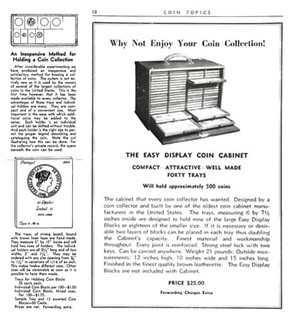 As the photos reveal the Easy Display System consists of a box with lid and drop front that holds 12 stacking trays of heavy fiberboard. The trays are identical to one another, but they accommodate individual coin holders having ports of varying sizes within which the coins rest on a shallower backing. These pieces may be arranged in either portrait or landscape orientation, the former with the port either above or below the surface reserved for a description of the coin. When closed and latched, the box measures 6.5" x 11.75" x 3.5" tall.
As the photos reveal the Easy Display System consists of a box with lid and drop front that holds 12 stacking trays of heavy fiberboard. The trays are identical to one another, but they accommodate individual coin holders having ports of varying sizes within which the coins rest on a shallower backing. These pieces may be arranged in either portrait or landscape orientation, the former with the port either above or below the surface reserved for a description of the coin. When closed and latched, the box measures 6.5" x 11.75" x 3.5" tall.
The smaller ad attached is from the April 1936 issue of Raymond's newsletter, Coin Topics, and its text matches the item I acquired. The larger ad from the October 1938 issue illustrates a grander version of the same product. It holds many more trays, and they appear to have some sort of handle on the front edge of each one. A fellow collector has one of these, and I was unsuccessful in prying it loose from him.
To visit Dave's website, see:
https://www.coincollectingboards.com/
NOTES FROM E-SYLUM READERS: JULY 18, 2021
The Exergue in Roman CoinageRegarding last week's Vocabulary article, Shawn Caza writes:
"The exergue was actually an important feature in Roman coinage, well before the Renaissance. The area sometimes contained part of the reverse legend, but from the middle of the 3rd century AD was increasingly used for the mint mark. Thus the exergue on late Roman bronze coinage often contains markings such as ASISC or ROM-PRIMA or SMANTA. On many coins the exergue was marked out via a ‘round line’ under the reverse design."
LEFT: coin of Julian II from 362-363 AD and lacks a formal ground line
RIGHT: coin of Vetranio from 350 AD and shows a formal "ground line"
Thanks! -Editor
To read the earlier E-Sylum article, see:
VOCABULARY TERM: EXERGUE
(https://www.coinbooks.org/v24/esylum_v24n28a13.html)
Last week Ted Puls mentioned his numismatic mentors, Captain Lee, and "Uncle Max, called VRUM by locals: very rich uncle Max." I asked him for more information. -Editor
"Captain Lee was a small-time coin dealer in Ft Collins, Colorado in the 1970's and 1980's (Leroy Lengner). I met him at a coin show in Loveland where he actually let me dicker on the price of a coin. I think the coin was a Lincoln cent semi-key date that was for sale for $2 that he enjoyed letting me steal for $1.50. He was a retired Air Force captain that worked at Woodward Governors in Fort Collins. He taught me much about coins and coin dealers. We had coin dates -before this would have been seen with suspicion (his wife was nearby). He once innocently left me in his coin den where he left a high-grade Roman follis on the desk in plain sight. Off from Lincoln cents and onto an amazing world of Roman coins. I soon noted a hoard advertisement 100 vf Roman coins for $300- a vast sum for me in High school but I did work too much= lawn mowing and washing dishes so I could afford them. I learned much from attributing these and Capt. Lee sold a book. He gave me a sack of Chinese cash and a book about them (Schjoth) again giving me weeks of learning entertainment. This still is my Chinese collecting is still my passion.
"Vrum" I never knew his real name as kids didn't know such things in that day. but he was a coin dealer in Ft. Collins in a sporting goods store then pawn shop. He let me search for foreign coins in the box to be able to get a coin from every country. He was very grouchy but not to me."
To read the earlier E-Sylum article, see:
NOTES FROM E-SYLUM READERS: JULY 11, 2021 : Coin Dealers as Entertainers
(https://www.coinbooks.org/v24/esylum_v24n28a08.html)
Dave Lange writes:
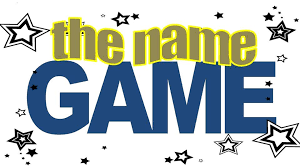 "Reading your account of how you attempted to create a website with the domain name nbs.org for the Numismatic Bibliomania Society I was reminded of my own disappointment at not securing the name coinboards.com. It was already taken by a company that made pull-tab merchandise boards, a mild form of gambling in which coins or coinlike tokens are removed from their slots, revealing what the player has won. Instead, I had to go with coincollectingboards.com which, as you found with coinbooks.org, is perhaps more indicative of the website's content. I was curious to see whether the name I sought originally is still active, and I discovered that it's for sale at $24,888 or best offer. I think I'll pass."
"Reading your account of how you attempted to create a website with the domain name nbs.org for the Numismatic Bibliomania Society I was reminded of my own disappointment at not securing the name coinboards.com. It was already taken by a company that made pull-tab merchandise boards, a mild form of gambling in which coins or coinlike tokens are removed from their slots, revealing what the player has won. Instead, I had to go with coincollectingboards.com which, as you found with coinbooks.org, is perhaps more indicative of the website's content. I was curious to see whether the name I sought originally is still active, and I discovered that it's for sale at $24,888 or best offer. I think I'll pass."
Curious about Heritage's two-letter domain name I reached out to Jim Halperin and asked, "How did you guys pick ha.com as your domain name? Was Heritage.com already taken? I see you own it now." -Editor
Jim writes:
"HA.com actually picked us rather than the other way around. Our site used to be heritagecoin.com, then heritagegalleries.com, then heritageauctions.com, but I always thought those addresses were a little hard to remember and too time consuming to type. We wanted to buy heritage.com but it was owned by a large regional newspaper chain and was unavailable at any price even though they never advertised it anywhere.
"So, when ha.com was offered to us at a ridiculous price, we decided it was a big improvement for our users, and made a realistic but much lower counter offer. Then every few months, we kept repeating the same offer, and after a year or two the owner realized that we weren't going to raise our offer and that nobody else was offering as much, so they accepted our offer. Several years later, the regional newspaper fell on hard times and hired a broker to sell some of their fallow assets, including heritage.com. Again, we offered a realistic but much lower price, and kept repeating the same offer every few months until they sold it to us.
"We don't advertise Heritage.com either, but quite a few people who've heard about us assume it's our URL, type it in their browsers and find us more easily that way."
Thanks - great stories. I remember working with someone from a law firm named Morgan, Lewis & Bockius - Major League Baseball made them an offer they couldn't refuse for their domain name, mlb.com. -Editor
To read the earlier E-Sylum article, see:
NOTES FROM E-SYLUM READERS: JULY 11, 2021 : How NATCA Became NTCA
(https://www.coinbooks.org/v24/esylum_v24n28a08.html)
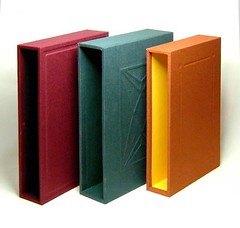 In response to Doug Nyholm's question,
Harold Welch writes:
In response to Doug Nyholm's question,
Harold Welch writes:
"Campbell-Logan Bindery has made several clam shell boxes and slip cases for me of excellent quality and at a very reasonable price. Their contact information is 7615 Baker St NE, Fridley, MN 55432, (612) 332-1313."
Brad Karoleff writes:
"Any of the bookbinders should be able to produce these for you. My bookbinder, The Ohio Bookstore, has made some custom ones for me. Their website is https://www.ohiobookstore.net/"
Thanks, everyone. -Editor
To read the earlier E-Sylum article, see:
NOTES FROM E-SYLUM READERS: JULY 11, 2021 : Query: Custom Book Slipcase Maker Sought
(https://www.coinbooks.org/v24/esylum_v24n28a08.html)
2021 SUMMER FUN SHOW REPORT
Howard A. Daniel III submitted this report on the recent FUN show in Orlando. Thanks! -Editor
FLORIDA UNITED NUMISMATISTS SHOW, JULY 6-8, 2021
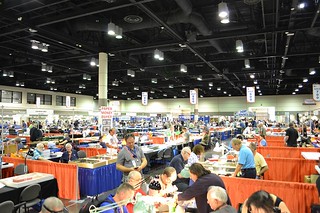 My wife, Phung, and I just returned from the July 6, 7 & 8, 2021 Florida United Numismatist (FUN) Show in Orlando, Florida. We always staff the International Bank Note Society (IBNS) club table with some IBNS Journals and membership applications for the summer and winter shows. Along with IBNS, we also have some Numismatics International bulletins, pinbacks and elongated Hungarian coins to hand out. Everything we brought to the show was handed out to the show's visitors and we hope we convinced some collectors to join one or both societies.
My wife, Phung, and I just returned from the July 6, 7 & 8, 2021 Florida United Numismatist (FUN) Show in Orlando, Florida. We always staff the International Bank Note Society (IBNS) club table with some IBNS Journals and membership applications for the summer and winter shows. Along with IBNS, we also have some Numismatics International bulletins, pinbacks and elongated Hungarian coins to hand out. Everything we brought to the show was handed out to the show's visitors and we hope we convinced some collectors to join one or both societies.
It was an excellent surprise to learn several American Numismatic Association (ANA) members were working on a donation of Gene Hynds' numismatic library by his wife Pat to the Indian River State College Library in Fort Pierce, Florida. The college is remodeling its library so there will be some delay before the donation will be completed. I heard it was going to concentrate on numismatics of North, Central and South America and they want to make it a branch of the ANA Library! I live just south of Fort Pierce and will be assisting in any way I can in getting the library established and loaning out the books. I will also find some references to donate to it. Contact Bob Mellor, our local ANA District Rep at RM3coins@gmail.com for more information.
I also learned that David Sklow is no longer the ANA Librarian and Doug Mudd has taken over his duties along with being the ANA Curator! What happened to David? I hope he is OK.
Wayne Herndon of Wizard Coin Supply had his usual very large display of numismatic books and supplies and I could barely squeeze into it because of so many customers. Wayne is an old friend from northern Virginia and attendee of the monthly Nummis Nova Dinners organized by Wayne Homren. I very much miss my numismatic friends from northern Virginia!
Across the aisle from us was Low Country Coins from South Carolina with several people working in the booth. One of them was recruiting numismatists and dealers (175 already signed up!) to attend the 49th South Carolina Numismatic Association Convention at the Greenville Convention Center on October 29-31, 2021. The man convinced Phung to attend the convention and see the beautiful countryside so I will be giving a talk to some Young Numismatists while we are there. You can get more information by sending an email to LowCountryCoins1@BellSouth.net.
Phung and I have new neighbors from New York City in our Port Saint Lucie community. The wife is Polish and the husband is Hungarian. I decided to give them a piece of paper money from each country and try to get them interested in numismatics. I was at Larry Hirsch's and his wife's table with tons of world paper money on the last day of the show and about an hour before we departed. I quickly pulled two notes from his inventory and told him what I was doing with them. He would not take my money. Good man!
The next FUN Show is January 6-9, 2022 at the Orange County Convention Center. This time it will not be in the older building between Rosen Centre and Rosen Plaza hotels but in the newer building across International Drive from the Rosen Centre. The January shows easily have over 1000 dealers from the USA and all over the world. It is THE show for us, and we will be very busy at the IBNS and NI club table!
That's great news about the numismatic literature donation to the Indian River State College Library. Anything that makes numismatics more accessible to the public is a good thing. -Editor
For more information on FUN, see:
http://www.funtopics.com/
SS CENTRAL AMERICA BELL TO RING AT ANA
For many years we've been following the recovery of gold coins, bars and other historical artifacts from the wreckage of the steamship SS Central America. -Editor
The 268-pound bell from the fabled Ship of Gold,
the SS Central America that sank in 1857, will be publicly displayed along with some of the recovered California Gold Rush treasure at the American Numismatic Association's 2021 Chicago World's Fair of Money®, August 10-14 (www.WorldsFairofMoney.com). The bell that helped to confirm the identity of the historic vessel was brought up from the Atlantic Ocean in 1988 and has not been exhibited in public for three decades.
The SS Central America represents the greatest American treasure ever found and its story is important to our history. This priceless treasure will be rung twice each day at booth #122 during the ANA convention in remembrance of the 425 passengers and crewmembers who perished when the legendary ship sank 164 years ago,
said Dwight Manley, managing partner of California Gold Marketing Group which owns the bell and recovered sunken treasure.
The ringing of the bell ceremony will be conducted daily 30 minutes after the show opens to the public and again at 3 pm. The American Numismatic Association 2021 Chicago World's Fair of Money will be in Hall A of the Donald E. Stephens Convention Center, 5555 N. River Rd., in the Chicago suburb of Rosemont, Illinois.
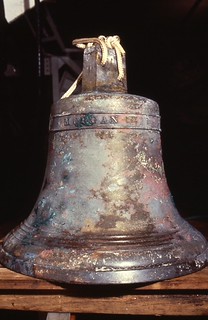
The treasures of the SS Central America are a time capsule of the California Gold Rush, and the sound of the bell draws you into the time-capsule in a different way. This is what the passengers and crew heard on their journey. It's spooky, and its reverent; an absolutely glorious tribute,
said Bob Evans, a scientist and historian who was a key member on each of the recovery expeditions starting in the late 1980s.
The SS Central America sank 7,200 feet under the surface of the Atlantic Ocean 150 miles off the North Carolina coast during a hurricane on September 12, 1857. She was on a voyage from Panama to New York carrying tons of California Gold Rush coins, ingots, and gold dust from the San Francisco and Northern California area. The tragedy took the lives of 425 of the ship's 578 passengers and crewmembers, and the loss of the gold cargo was a major factor in the economically devastating financial panic of 1857 in the United States.
The ship's bell has only been publicly exhibited twice before, both times in Ohio. It was displayed in 1992 at the Columbus Museum of Art and in 1993 at the Columbus Zoo. It has been in secure storage for nearly three decades, kept in approximately 90 gallons of distilled water weighing about 750 pounds in addition to the bell's 278 pounds.
The maiden voyage of the SS Central America (then named the SS George Law) was in October of 1853.
When the submerged bell came into view on the camera of the robot submarine being used to search for the ship in 1988, the expedition team could see part of the embossed lettering on it, MORGAN IRON WORKS NEW YORK 1853. That provided additional evidence that the shipwreck site was indeed the SS Central America.
A few days before we recovered the bell, I actually found gold dust particles in sediment from the site. So, the shipwreck identity was already pretty solid. But the bell provided spectacular confirmation,
stated Evans.
As it sat on the bottom of the Atlantic Ocean, the bronze bell was really in three different environments: 1) exposed to the seawater above the seabed; 2) at the soil-water interface itself (the seabed,) which was a very chemically active zone; and 3) buried in the sediment,
explained Evans.
This bell is nearly two feet tall and a little over two feet in diameter at the lower flange edge. It is larger than any other ship bells I have seen, larger than bells seen in photographs taken aboard other vessels of the period,
said Evans.
I wonder if Morgan Iron Works had intended this for a church, and then decided to use it for a steamship for which they were
making the engines?
For additional information about the American Numismatic Association 2021 Chicago World's Fair of Money, visit www.WorldsFairofMoney.com.
THE BOOK BAZARRE
LUCKY COINS OF ROARING CAMP
Ralph F. Wetterhahn of Long Beach, CA submitted this story about some coin finds at the Roaring Camp Mine site near Sacramento. Thanks! Great adventure. -Editor
More Luck at Roaring Camp
Roaring Camp Mine is mired in history. Set in the hills along the Mokelumne River east of Sacramento, California, it hums with the tales written by Mark Twain and Bret Harte, the most famous of which is Harte's "The Luck of Roaring Camp." The area has been mined continuously since the 1850's, and to say the ground is rich in gold is a given. I think of it as a "dude ranch" for miners. I spent a week in May working on a twenty-nine man crew split up into six teams at both Roaring Camp and China Camp (not to be confused with Chinese Camp, located some miles to the south). I rented a cabin on the site and during the week mined gold using sluices, trommels, Wiss-Bangrs, hi-bankers and pans.
Along the way, some unexpected finds turned up. At China camp, a team was using a Wiss-Bangr to clean out a deep crack in the bedrock. This gadget is a mini hydraulic system that pumps water directly onto the dirt/gravel while being immediately sucked up by a venturi hose that then jets the water/gravel through a sluice. Lo and behold, something glimmered in one of the riffles. One of the team members picked it out of the running water and his eyes about popped!
Notice the date on this Seated Liberty Dime! It might have been handled by Twain or Harte! But if you've read Twain's autobiography, Harte was so tight he likely never lost a dime!
The next day, when the team was returning from China Camp, one of the team members asked to be dropped off at the top of the hill on the way back. Then he swung his metal detector along the hiking trail back to camp. "Ping!" He dug a few inches of dirt and unearthed a Bust Quarter, dated 1821, two hundred years old! One wonders how many '49er hands had touched this coin?
Both coins are considered artifacts, so the finders were compensated and the coins are now on display in the lodge museum.
Oh, I almost forgot. How much gold was my take after five days hard (really hard) labor? 3.5 pennyweight. My impression is it was real and it was fun, but it wasn't real fun! Wore me out!
I should note another numismatic connection: Bret Harte for a time served as Secretary of the United States Branch Mint at San Francisco. Twain often visited Harte in his Mint office. -Editor
For more information on the Roaring Camp Mining Company, see:
https://roaringcampgold.com/
To read Harte's story, see:
Bret Harte The Luck of Roaring Camp
(http://www.eastoftheweb.com/short-stories/UBooks/LucRoa.shtml)
VOCABULARY TERM: EXPOSITION MEDAL
Here's another entry from Dick Johnson's Encyclopedia of Coin and Medal Terminology. -Editor
Exposition Medal, Expo Medal. A medallic item bestowed either as a prize for a display or activity at an exposition or fair, or one issued for attendance or purely to commemorate the occurrence of the event. Exposition prize medals are highly cherished by their recipients; they have been awarded to individuals, business firms, organizations, government departments and even to foreign governments. Exposition medals of all kinds are popular and desired as well by collectors, perhaps for the large number that have been issued for expositions at many levels – local, state, regional, national, international. The term became shortened in mid 20th century; now "expo" is universally understood.
The first such expositions grew out of the local fairs in Germany, where local wares were exhibited accompanied by activities occurred with a holiday flare. It wasn't long before merchants found they could sell their wares at these local fairs. From this has grown the fair at increasing larger geographical areas, until 1851 when the first such international exposition was held in London.
Two years later, in America, New York City tried to emulate the 1851 London exposition, even building a similar building to house the exposition's activities, a mammoth glass edifice called the Crystal Palace. Almost immediately in America smaller expos were held with a central theme of agriculture or mechanical arts.
Expo award medals. Medals were first issued only to the prize winners, for the best agricultural product, or the best mechanical product. Recipients of these award medals attempted to publicize their winning expo medals, by including illustrations of the medal in their advertising, on their stationary and, often, on their products themselves. For nearly eighty years the Campbell Soup Company illustrated the medal they won in 1900 at the Paris International Exposition. This medal became the company trademark, this gold symbol was placed on every one of their red and white soup cans. (The medal, however, was removed from labels in 199x).
A few firms had medallic copies made of their winning medal. In effect they created a new and separate class of numismatic items, advertising replicas, giving these out as liberally as they could afford.
The expositions themselves realized they could publicize their own event with medals. One of the most popular was the bird's eye, or aerial view medal. This could give the viewer an overall concept of the total fairgrounds within one view, in a pocket item the viewer could carry with him. From this other souvenir medals evolved to promote the fair. Expo buildings shown on these souvenir medals were popular.
Columbian Exposition. America's first major expo of note was the Columbian Exposition, the Chicago World's Fair of 1892-93. This one expo spawned tremendous activity in the coin and medal field and the innovations created for this event alone are legion.
The first commemorative coins were issued by U.S. for this exposition in three denominations: quarter, half and silver dollar. The first hollowback or stamp and stencil medals were created for this expo, as were the first product medals – those made of the composition they were promoting. Aluminum was widely used for the medals at this expo (previously it had been an expensive alloy to make anything, but it had only recently become available because electricity had become available, see aluminum).
The activity – industrial, commercial and artistic – generated by this event is unprecedented in history and is reflected in the coins and medals issued for this event. The expo also spawned new medalmakers to come to America, some immigrating, others creating their medallic products and shipping them to America. Modern medalmaking industry in America dates from the Chicago Columbian Exposition alone.
To read the complete entry on the Newman Numismatic Portal, see:
Exposition Medal, Expo Medal
(https://nnp.wustl.edu/library/dictionarydetail/515874)
BROWN AND DUNN
American Numismatic Biographies author Pete Smith submitted this piece on the authors of the classic guide to grading U.S. coins. Thank you! I added images of a copy of the book in my library. -Editor
In 1958, the coin hobby needed a grading guide and that need was met by A Guide to the Grading of United States Coins by Martin R. Brown and John W. Dunn. The 1958 paperback edition had photos to illustrate coin types and written description for eight circulated coin grades. By the hardbound fourth edition (1964), published by Whitman, the grades were illustrated with line drawings. A seventh edition was published in 1980.
The line drawings were by Racine artist Arthur Mueller. He also did the drawings for the Standard Guide to Grading Canadian Coins.
The authors also collaborated on Market Value Index for Circulating United States Coins in 1962.
American Numismatic Biographies has very brief biographies for the authors.
Brown, Martin R. Author (b. 10/22/1910 d. 10/21/1989)
Born in LaDue, Missouri. Married to Antonia Jaronek with four sons and a daughter. Dealer after 1937 in Oklahoma City. Later the business was run by his son.
He died in Hillcrest Hospital.
Dunn, John W. Author (b. 12/2/1903 d. 9/28/1991)
Born in Aransas Pass, Texas. Married to Dorothy Brewer and divorced prior to 1940. Married to Blanche Lazelle Laughlin in 1940. They had two sons. Resident of Norman, Oklahoma (1930). Collector after about 1920.
He received the ANA Medal of Merit in 1964.
I thought the authors deserved a better memory so I dug a little deeper.
Martin Richard Brown was the son of Grover Cleveland Brown (1883-1956) and Emma D. Brown (1883-1960).
M. R. Brown joined the ANA in 1936 as member 5508 and began to run ads in The Numismatist in 1938. He served as vice-president of the Oklahoma City Coin Club in 1939. He continued in business as Brown's Coins and Stamps.
As a bit of a distraction, dealer M. Ralph Brown from Albuquerque, New Mexico, joined the ANA in 1942 as member 8868. He made contributions in the study of Mexican numismatics. Unfortunately, in the Centennial History of the ANA, author Bowers identifies M. Ralph Brown as the co-author of the grading book.
Martin and Antonia Brown are buried at Resthaven Gardens Cemetery in Oklahoma City.
Researching John W. Dunn proved to be quite a challenge. John Wallace Dunn, John William Dunn and John William Wallace Dunn are multi-generational names and more than one have connections in Oklahoma.
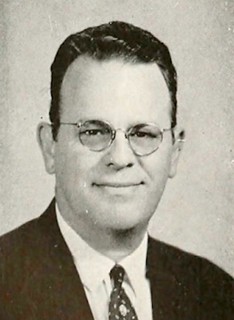 John Wallace Dunn was the son of the Reverend Wallace Alexander Dunn (1870-1940) and Lessie I. Morland Dunn (1877-1961). The family moved frequently, never appearing at the same location for the census. His children with Dorothy were Lessie B. Dunn, named for his mother and John Wallace Dunn, Jr.
John Wallace Dunn was the son of the Reverend Wallace Alexander Dunn (1870-1940) and Lessie I. Morland Dunn (1877-1961). The family moved frequently, never appearing at the same location for the census. His children with Dorothy were Lessie B. Dunn, named for his mother and John Wallace Dunn, Jr.
John W. Dunn joined the ANA as member 25156 in 1956. He served as vice-president of the Oklahoma City Coin Club in 1956 and produced a design for the club medal in 1958. Dunn was president of the Sooner Coin Club in Norman in 1960. He served on committees and made educational presentations for the ANA.
Dunn was a more prolific writer than Brown. He was a member of the Numismatic Literary Guild and wrote about various topics including Indian Trade Tokens of Oklahoma.
John W. Dunn was a theater professor at the University of Oklahoma and Director of the WPA Federal Theater Project in Oklahoma. He is credited as author of Flopsy, Topsy and Mr. Bowser and Artists and Models
which appears to have been written for puppets. He was also affiliated with the Oklahoma Educational Television Authority and director of stations KOKH and WNAD.
John W. Dunn is buried at Sunset Memorial Park in Norman, Oklahoma. Blanche Lazelle Loughlin Dunn remarried and is buried in another cemetery in Norman.
Pete Smith proposes giving an E-Sylum Smarty-Pants Award to the first correct response to this question: Who won the first gold medal at the 1896 Athens Olympics? -Editor
HARVEY STACK'S NUMISMATIC FAMILY, PART 100
The latest article in Harvey Stack's blog series begins the year 1986 and the advent of professional grading and encapsulation services, which changed the coin market forever. -Editor
The year of 1986 brought two changes that would be very influential to the hobby's future: advances in professionally-run grading services and the increased scale of the United States Mint's involvement in numismatics.
In 1986 PCGS began providing grading and encapsulation services (followed the next year by NGC), forever changing coin collecting. Grading and authentication already existed in an attempt to weed out counterfeits, as well as altered, doctored, polished and mislabeled coins. The new companies greatly expanded the practice, sealing the coin in a plastic holder (slab) that protected the item from further damage and had a numerical grade permanently attached to the holder and, thereby, to the coin. This gave numismatists, especially those who were entering hobby with little experience, confidence in what they were buying.
The professional grading services used a system originated by Dr. William Sheldon in 1949 for evaluating United States large cents, which combined adjectival grading (in shorthand form) with numbers on a scale that ran from 1 to 70. This system came to be used for other denominations, but early on there was little consistency to how it was applied. As noted earlier in this story, in the 1970s the American Numismatic Association brought together a large group of professional numismatists to try to create a more standardized and useful grading system. While there were, of course, differences in opinion and constant discussions it was announced that the Sheldon system would be adopted with some modifications and its use would be expanded to all series. With support from the Guide Book of United States Coins which would use the new grades, they also asked professionals within the hobby to add this system to their grading expressions.
Here is a sample of the upper grades:
VF-30 for VERY FINE
VF-35 for CHOICE VERY FINE
EF-40 for EXTREMELY FINE
EF-45 for CHOICE EXTREMELY FINE
AU-50 for ABOUT UNCIRCULATED
AU-55 for CHOICE ABOUT UNCIRCULATED
MS-60 for MINT STATE or UNCIRCULATED
MS-63 for CHOICE MINT STATE or CHOICE UNCIRCULATED
MS-65 for GEM MINT STATE or GEM UNCIRCULATED
MS-70 for a PERFECT New Condition MINT STATE
Of course, no numerical system, even with adjectival grades included, could take everything into account, including strike, luster, eye appeal, toning and other particular aspects of a coin. Often further words were needed to actually describe what a coin looked like and what special qualities it had beyond the level of wear. Over time the numerical
ratings would be expanded, especially at the upper end of the scale so that every number from 60 to 70 would be used in conjunction with MS (or Proof) and, eventually, even those numbers would be subdivided using a star or plus sign. But in 1986, those developments were long in the future.
The ANA founded ANACS (American Numismatic Association Certification Service) where coins could be sent for grading and authentication. ANACS would photograph the coins and return them, graded to the sender. As discussed earlier, problems quickly arose with this system, including switching documentation to inferior coins and a great deal of resubmissions, some that were reflected in the census of graded coins and some that were not. With the advent of sealed plastic slabs, the market changed again although, of course, it could not solve all grading issues. As always, even improvements to the system could not stop individuals who were committed to finding a way to work around the system for their own benefit.
As newer systems were put into place, the debate over grading continued (and does to this day). Experienced collectors and dealers trusted their own opinions and often opted to continue the original methods of grading that had developed over the past century. Resubmission continued to be an issue, as individuals attempted to get upgrades
, a
situation that affected census listings in all areas. And as grading itself is subjective, not scientific, there was always the
judgement of the graders to keep in mind.
But, while it may not have been clear in 1986, change was coming and professional grading and encapsulated coins were the future of American numismatics. Auction companies and retail dealers who had adjusted to using the ANA grading system earlier now adjusted to professional third-party grading, although it did not happen overnight. Everyone from beginning collectors to experienced dealers needed to learn more about the situation and the ANA, PNG and other organizations tried to provide education, through seminars and at coin shows or club meetings. Change can be difficult and it seemed that a slow down developed and the overall economic growth of the hobby seemed to falter. It took some time for numismatics to adjust and for activity to expand again.?
To read the complete article, see:
Harvey Stack Remembers: Growing up in a Numismatic Family, Part 100
(https://www.stacksbowers.com/News/Pages/Blogs.aspx?ArticleID=harvey-stack-remembers-part-100)
To read the earlier E-Sylum article, see:
HARVEY STACK'S NUMISMATIC FAMILY, PART 99
(https://www.coinbooks.org/v24/esylum_v24n27a20.html)
ANS COLLECTIONS MANAGER ELENA STOLYARIK
Austin Andrews of the ANS recently published an interview in the Society's Pocket Change blog with Collections Manager Elena Stolyarik. Here's a short excerpt; see the complete article online. -Editor
Dr. Elena Stolyarik, Collections Manager at the American Numismatic Society, has held nearly every single one of the Society's over 800,000 objects. As a critical member of the curatorial staff, the Collections Manager diligently maintains the Society's vast, encyclopedic holdings of coins and currency, medals and money—all behind the scenes. Dr. Stolyarik's background in museological, archaeological, and numismatic methods gives her a unique perspective on the purpose and function of the ANS. Prior to coming to the ANS in 1994, she led the Numismatic Department at the Odessa Archaeological Museum, excavated at Tyras on the Black Sea, and was a research associate at the University of Pennsylvania Museum of Archaeology and Anthropology. In an interview at the Society's headquarters in New York City, Dr. Stolyarik and Assistant Director Austin Goodwin Andrews discussed her work and the particularities of the Society and its holdings.
Austin Goodwin Andrews: What is the role of the Collections Manager at a research institution like the ANS, where object care and curation are so intermingled?
Elena Stolyarik: First of all, it means that you are a part of the professional team of one of the oldest museums and research institutions in the United States. The Society has been dedicated to researching numismatic objects and popularizing the field of numismatics since it was founded in 1858. Over the past 163 years, the Society obtained the objects in its collection from a range of sources, including from generous donations, bequests, and purchases. These and any new acquisitions should be properly maintained, preserved, and archived according to established museum practices and procedures. As the Collections Manager, I have several obligations. I register and manage documentation for all new museum objects, including accessioning and deaccessioning, cataloging, inventories, and other records. All of us in the curatorial department share responsibilities. We work as a team to ensure the collection is well cared for, documented, and made accessible to the public and for research. Because every one of us can replace each other when necessary, these are our mutual jobs.
AGA: You're also involved with exhibitions and oversee all of the loans we make to other institutions. While the ANS regularly loans objects to major museums like the Metropolitan Museum of Art here in New York or the J. Paul Getty Museum in Los Angeles, we have loans to much smaller organizations, too, like the Bechtler House in rural North Carolina. What are some interesting examples of loans you've helped arrange?
ES: This is also my job: to keep track of loans, to process new loans, to renew loans, for sending insurance and loan agreements. Along with the curatorial staff, I provide consultation services, help with selections and installations of our objects, and serve as courier to the borrowing institutions to accompany our loans. Today, we have over 380 objects on view in permanent, temporary, and traveling exhibitions. We don't have space for a big exposition here at the ANS, but we maintain our own Exhibition Hall with several cases on display to introduce our visitors to the history of numismatics. At the end of the year, the curatorial staff organizes a display with new annual acquisitions.
When we had the original screw-press for the gold Bechtler dollars in a popular exhibit at the Federal Reserve, someone visiting from the Bechtler House saw it there and coordinated requesting the loan. This unique artifact became the centerpiece in their exhibition at the historic home of Christopher Bechtler in Rutherfordton, North Carolina. This is very important because, year after year, people can now visit this house and they can see real history: not only the coins, but they can see how these coins were produced.
We had another interesting experience participating in an unusual exhibit organized by BVLGARI, known for its glamorous luxury products. This show, which was organized at their flagship store on Fifth Avenue, connected ancient Rome and the luxury brand since it was founded in Rome in 1884. It provided an opportunity to display some extraordinary objects from the ANS Roman Department, including a portrait coin of Julius Caesar and a remarkable example of a silver tetradrachm of Mark Antony and Cleopatra, among others.
We have objects at some of the best museums in the US and abroad. The Met often has objects from the ANS for temporary exhibits—such as their successful World between Empires exhibit about art and identity in the ancient Middle East—but they also prominently display our numismatic objects in their permanent exhibits.
I can think of many other interesting examples. The Jefferson Foundation at Monticello has displayed our silver Thomas Jefferson Indian Peace Medal since 1992 and War and Peace in Miniature: Medals from the American Numismatic Society was recently on temporary display at the Education Center at George Washington's Mount Vernon.
To read the complete article, see:
MANAGING THE COLLECTION: AN INTERVIEW WITH DR. ELENA STOLYARIK
(http://numismatics.org/pocketchange/stolyarik/)
2021 SOWER AWARDS ANNOUNCED
This press release announces the winners of Central States Numismatic Society's President Mitch Ernst's 2021 "Sower Awards". Congratulations. I added an image of coin designer Oscar Roty's model of The Sower. -Editor
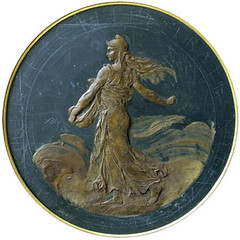 CSNS President, Mitch Ernst, is proud to announce Dennis Tucker and Chris Seuntjens as the 2021 recipients of his annual
CSNS President, Mitch Ernst, is proud to announce Dennis Tucker and Chris Seuntjens as the 2021 recipients of his annual Sower Award
. The sower is an allegorical image of a person planting seed in a field portraying hope for the future. "It is my privilege to bestow the "Sower Award" to two gentlemen, who from my observation and experience epitomize the spirit of the 'sower'. Both have shown, by example, the spirit of the sower which is "Sow good seeds and let time do the rest" said Ernst.
CSNS President, Mitch Ernst, is proud to announce Dennis Tucker and Chris Seuntjens as the 2021 recipients of his annual Sower Award
. The sower is an allegorical image of a person planting seed in a field portraying hope for the future. "It is my privilege to bestow the "Sower Award" to two gentlemen, who from my observation and experience epitomize the spirit of the 'sower'. Both have shown, by example, the spirit of the sower which is "Sow good seeds and let time do the rest" said Ernst.
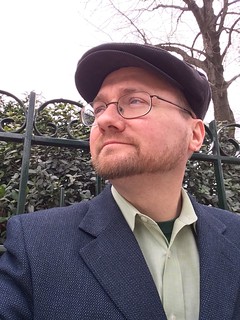 Dennis Tucker is best known as a publisher at Whitman Publishing, specializing in books on numismatics, banking and financial history. Less known is that about 15 years ago he started spending and dropping Buffalo nickels to be found in public venues.
Dennis Tucker is best known as a publisher at Whitman Publishing, specializing in books on numismatics, banking and financial history. Less known is that about 15 years ago he started spending and dropping Buffalo nickels to be found in public venues. I've ‘dropped' more than a thousand of the coins so far—in airports, public parks, playgrounds and hiking trails.
More recently,
he began organizing older portions of his collection, portions that he no longer actively collects, and began sowing
these items which include the Mint's pewter replicas of the Comita Americana medals and other bi-centennial medals. High traffic areas are his target and the numismatic items are not hidden to cleverly, as the goal is for them to be found soon and treasured, with minimal exposure to the elements.
Give those coins, medals and tokens you have accumulated over the years a new and noble purpose in life. Put them to work. Sowing is easy. And it can start a newcomer on the path to hobby fun
Tucker said.
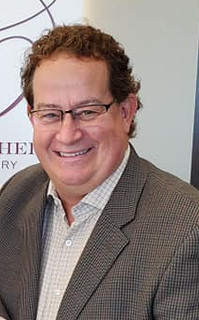 Chris Suentjens is a long time coin dealer from Des Moines, IA. Always looking for ways to attract the interest of YN's in the hobby, Covid-19 gave Chris a particular challenge. He started a Facebook group called
Chris Suentjens is a long time coin dealer from Des Moines, IA. Always looking for ways to attract the interest of YN's in the hobby, Covid-19 gave Chris a particular challenge. He started a Facebook group called Americans Helping Americans
, in essence a bulletin board for good ideas and good deeds of people finding ways to help families cope with schools being closed and kids being home with little to do. Christopher's rare coins made a post on Facebook offering 20 free foreign coins to whoever wanted them. That outreach shipped out over 2,000 coins to families. Out of that grew a project of Wheat cents, which again mailed out over 6,000 Wheat cents to kids and families homebound due to Covid-19 restrictions. Again, not satisfied, Chris worked with the Iowa Army National Guard Youth Program to put together coin collecting kits for kids who had a parent deployed. 100 coin collecting kits were assembled in an assortment of nickels, a nickel album, a price guide, 2x2's and 2x2 pages and a magnifying glass. Over 100 of those kits were mailed out. In all, over 11,000 coins were sent to kids in 2020. I'm pretty sure there are lots of kids that will be coin collectors for life
said Seuntjens.
The presentation of the awards will take place at the CSNS Award Ceremony scheduled to take place at the World's Fair of Money on Friday, August 13th at 8:00 am. Previous recipients include: 2019 Rod Gillis, Clifford Mishler, Dave Harper, Walt Ostromecki and Rick Snow. 2020 Barbara Gregory, Brett Irick, David Heinrich and Thomas Uram.
Ernst collects coins, medals, currency, etc. with the image of the sower and each award will have a medal from his collection attached to the plaque.
NGC PHOTO PROOFS
CoinWeek editor Charles Morgan published an article recently on the NGC Photo Proofs. Here's an excerpt - see the complete article online. -Editor
One of the aspects of numismatics that I find particularly enjoyable is reading vintage books and periodicals and, through the information contained in them, trying to formulate an understanding of the hobby's landscape at different points in time. This research does not always yield major breakthroughs in the way I look at the hobby, but from time to time I learn about something that still impacts the hobby that I didn't know anything about.
A recent discovery (for me, anyway) was the existence of a service at Numismatic Guaranty Corporation called NGC Photo Proof. The product debuted in 1995. The ad I saw appeared in the August 1995 Numismatist.
If you've never heard of NGC Photo Proof, you aren't alone. I had never heard of the service before seeing the full-page ad, and an eBay search for NGC Photo Proof
turned up nothing for sale and nothing completed within the last 90 days. Apparently, collectors who
pay for the service do not see them as objects with secondary market potential. Even a Google search turned up only a few matches,
most tied directly to the current version of NGC's website, which means that NGC Photo Proofs are a thing someone can still order
through the service.
I reached out to my friend, the always helpful David W. Lange (who appears a few years younger in the 1995 ad), and asked him about the service. David told me that he joined NGC in 1994 to write NGC Photo Proof narratives. Then, only the most popular USA coin series had background texts prepared, and several of those histories were written by dealer Robert Koppelman of Ft. Lauderdale. Others were written by the late Coinage Magazine editor, Ed Reiter.
The three Photo Proofs that David sent me to review were produced in 2007. One describes a High Relief 1907 Saint-Gaudens double eagle (NGC PF69), the second an 1866 five-cent piece (NGC PF-67), and the third an 1884 With Motto
half dollar (NGC MS67). A small image of each coin appears amidst an art collage of high-eye appeal classic U.S. coins.
To read the complete article, see:
NGC Photo Proofs – Something I've Never Seen Before
(https://coinweek.com/coins/certified-coins-news/ngc-photo-proofs-something-ive-never-seen-before/)
STEPHEN ALBUM JUNE 2021 E-AUCTION 10 RESULTS
Here's the results press release for the Stephen Album Rare Coins Internet Auction 10. Nice mix of world material. -Editor
Stephen Album Rare Coins held its Internet Auction 10 on June 28, 2021 at its offices in Santa Rosa, CA. The auction exceeded expectations, with a total hammer price of $213,000 (including buyer's fees) for 1000 lots, and a sell-through rate of 93.8%. The number of bidders grew by over 30% compared to the previous Internet Auction 9 held in April, resulting in a new record for the firm.
Nearly half of the auction consisted of world coins graded by PCGS. There were some shocking sales results as many items went for multiples of their pre-sale estimates, including the following (prices exclude buyer's fees):
LOT 911: CHINA: TIBET: AR rupee, Chengdu mint, ND (1902-1911), Y-3.1, L&M-360, Szechuan-Tibet trade issue, small portrait of the Chinese emperor Guang Xu without collar, derived from the British Indian rupee of Queen Victoria // horizontal rosette at center, PCGS graded AU53. Estimated for $150 to $250. Realized $6,000.
LOT 873: CHINA: HUPEH: Kuang Hsu, 1875-1908, AE 10 cash, ND (1902-05), Y-122, full reverse brockage error! cleaned, PCGS graded EF details, RR. Estimated for $250 to $350. Realized $3,750.
LOT 436: WORLD: HUNGARY: Artex Restrike: Miklós Horthy, regent, 1920-1944, AR 5 pengo, 1929-BP, KM-X12.1, St. Ladislav (Szent Laszlo) on horseback medallic issue, without initials U.P. (utanvert probaveret), PCGS graded Proof 66. Estimated at $100 to $150. Sold for $2,400.
LOT 769: WORLD: SHARJAH: Khalid bin Muhammad al-Qasimi, 1965-1972, AR riyal, 1970/AH1389, KM-2, The Mona Lisa, a fantastic quality example! PCGS graded Proof 69 DCAM. Tied for 'top pop' and none graded higher at PCGS. Estimated at $100 to $150. Realized $2,200.
LOT 278: ISLAMIC: OTTOMAN EGYPT: Farouk, 1936-1952, AR 20 piastres, 1937/AH1356, KM-368, a lovely quality example! PCGS graded MS64. Estimated at $150 to $250. Realized $1,100.
LOT 915: INDIA: ANCIENT INDIA: Anonymous, ca. 2nd century BC, AE rectangular unit (9.43g), Pieper-1063, hill and pillar of Asoka, all in deeply incused square, lovely example, VF-EF. Estimated at $100 to $130. Realized $800.
LOT 54: ISLAMIC: SELJUQ OF RUM: Kayqubad I, 1219-1236, AR dirham (2.99g), Konya, AH623, A-1211, cf. Zeno-160208, the date in numerals at reverse 6h, citing the caliph al-Zahir, choice VF, R. This type is the earliest confirmed example of a numeral date on any Islamic silver coin. Estimated at $75 to $100. Realized $650.
LOT 971: INDIA: BRITISH: AE rupee token, 1874, KM-Tn2, Prid-32, one rupee grain token struck at the Calcutta mint for the Bengal famine of 1874, with central hole as issued, PCGS graded AU55. Estimated at $450-500. Realized $650.
Company CFO Paul Montz was happy with the results. Many items went for really eye-opening numbers. There will be some catalog prices in great need of updating.
The firm is currently taking consignments for future internet and signature auctions. Please visit www.stevealbum.com for more information.
To read the earlier E-Sylum article, see:
STEPHEN ALBUM JUNE 2021 E-AUCTION 10
(https://www.coinbooks.org/v24/esylum_v24n25a21.html)
DAVISSON'S E-AUCTION 40 ANCIENTS
Lief Davisson reviewed some of the ancient coins in the Davisson's upcoming E-Auction 40 in an email to clients last week. Here's his writeup. Some nice coins here. -Editor
E-Auction 40 closes Wednesday, July 21st! Below we look at some lots in the Ancient section that merit extra attention. (And be sure to scroll to the end for one of our favorite numismatic publications.)
The Greek section of the sale begins with a fascinating small group of scarcer Iberian issues. From the distinctly Roman-feeling Sekobirikes denarius above, to the stylish bronzes at once crude and artistic, Iberian coinage is one of the first areas of ancient coinage that I remember being able to identify without being familiar with the issues themselves. The distinctive style and motifs, to me, resemble a fascinating blend of Celtic and Greek. With many pieces available for modest sums it is also a perfect area to dabble in without needing to break the bank.
Apart from the usual smattering of interesting pieces, the other theme of the Greek section this time around is tiny issues–obols and chalkoi–of exquisite style. These tiny works of art are often rare, and the fine artistry displayed on such a small canvas was often an expression of civic pride. In person they may seem modest at first glance, but on close examination (or when enlarged online) you can see just how much is contained in such a small area.
After a couple auctions off, we are once again offering a few choice electrotypes of rare Greek coins in the British Museum. These two piece historic replicas are the perfect way to represent coins that would normally be out of reach to all but the most committed collector.
The Roman section features a nice selection of silver and bronze, imperial and provincial. The choice imperatorial denarius with a mask of Pan and the extremely rare Caligula/Germanicus fourrée denarius above are two highlights, as are the Agrippa and Claudius asses, both with exquisite portraiture and patinas.
I have always had a soft spot for earthen-highlighted bronze, both imperial and provincial, and these two lots are fine examples. As the photographer I do not mind saying that my photo of the Pisidian bronze of Antoninus Pius does not do it justice. It is beautiful in hand, with the design set off by light green highlights. Another handsome piece, the orange earthen highlights on the Philip I sestertius are accurately shown in the photo.
Typically more modest and less aggressively collected, it can be easy to miss truly choice late Roman issues when they are offered. The Valerian I and Gallienus antoninianii shown above are both exceptional for their issue, and the small group of late Roman in the auction features several other particularly nice examples of the era.
One particularly effective strategy when browsing an auction is to look for any 'orphan' lots–a coin or two from a category that is otherwise not well represented in the sale, or is not usually offered by the auction house. These can often escape the notice of collectors of that area. These two late Roman seals are two such lots–we rarely offer seals, but these examples caught Marnie's eye several years ago. With relatively little scholarship available (at least compared to coins) they are nevertheless fascinating pieces of history.
The publication Lief mentioned is the one you're reading now, The E-Sylum. Thanks for the shout-out! NOTE: Our ANA award was in the "Electronic" category. -Editor
Finally, a brief aside. There are many high quality publications that support collectors, and one of our favorites is the E-Sylum. Established in 1998, edited by Wayne Homren, it publishes a wide range of curated numismatic articles weekly. It just won first place for electronic publications in the ANA's 2021 Outstanding Club Publication competition. If you are not familiar be sure to check it out!
For more information on the sale, see:
https://davcoin.com/
STACK'S BOWERS 2021 ANA PAPER MONEY SALE
Here's the press release for the upcoming Stack's Bowers world paper money sale. -Editor
Stack's Bowers Galleries has announced that their August ANA World Paper Money Sale has been finalized and is posted on their website StacksBowers.com. With the bidding now open, collectors have the opportunity to add treasures to their collections as many critical and heavily collected areas of World Paper are represented in the offering.
The sale is anchored by a few named collections, including the Panama Collection that features four lots of
Panamanian Banknotes, all of which are the highest graded in uncancelled and issued form (lots 30366, 30668,
30370, and 30371). These notes collectively are estimated to fetch well above $100,000, and are available for the
first time to the public. When asked for his comments on the set, Aris Maragoudakis, the firm's Director of World
Paper Money, stated, While we have been fortunate to handle the majority of the higher end Panama notes that
have hit the market in recent years, this set stands out as remarkable for its incredible preservation. The 1, 5, and 10
Balboas in gem condition are next to impossible to find, and it's going to be interesting to see the collecting
community fight to upgrade their sets. Also, the 20 Balboa in its original state, uncancelled, and with exceptional
paper quality, which is virtually unheard of.
The Don Allen Collection offers significant Australian and Western Samoan pieces as well as to some significant pieces from British Guiana, British Honduras, and other areas of the Commonwealth. The Bank of Adelaide 1 Pound in lot 30011, and the Commonwealth of Australia 5 Pounds in lot 30012 are among the more noteworthy items in the collection.
The Sao Miguel Collection offers incredible pieces from Azores, such as the 5 Mil Reis Prata from 1905 in lot 30017, or the 1905 Banco de Portugal 10 Mil Reis Ouro in lot 30019. The 20 Mil Reis Ouro in lot 30020 is an incredible piece that seldom crosses the auction block.
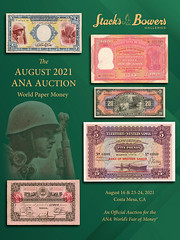 One of the most unique collections to be offered by Stack's Bowers Galleries, is the Ricardo Collection, a privately
built collection formed entirely without purchases from dealers, or auction houses. The collection, which took
decades to build, was built primarily by dealing directly with banks and governments, or trading with collectors in
various countries that were visited by the consignor. Part I of this collection covers the areas of Bolivia, Colombia,
Iran, Iraq and Russia. A multitude of additional countries will be offered in future sales. Aris Maragoudakis added,
One of the most unique collections to be offered by Stack's Bowers Galleries, is the Ricardo Collection, a privately
built collection formed entirely without purchases from dealers, or auction houses. The collection, which took
decades to build, was built primarily by dealing directly with banks and governments, or trading with collectors in
various countries that were visited by the consignor. Part I of this collection covers the areas of Bolivia, Colombia,
Iran, Iraq and Russia. A multitude of additional countries will be offered in future sales. Aris Maragoudakis added,
The fascinating collecting method that built The Ricardo Collection led to a passionately built assortment of paper
that spanned the globe, with an astounding focus on organization, quality, and completion.
The sale is slated to take place August 16, 2021 at 10:00 AM PDT (1:00 PM EST) in the brand new Griffin Studios, a custom-built, broadcast ready television, film and event facility located at the Stack's Bowers Galleries headquarters in Costa Mesa, California. To learn more email info@StacksBowers.com, call 800-458-4646, or visit StacksBowers.com.
THE BOOK BAZARRE
NUMISMATIC NUGGETS: JULY 18, 2021
Here's a selection of interesting or unusual items I came across in the marketplace this week. Tell us what you think of some of these. -Editor
A Fantastic Sicilian Gold Issue with a Mid-18th Century Pedigree
In addition to an exemplary live session of ancient coins, our upcoming Official Auction of the ANA World's Fair of Money will feature the magnificent "Collection of a Gentleman," an advanced cabinet of Greco-Roman denominational rarities. Assembled over the course of five decades, this astounding array features various denominations that are not often seen, with a handful offering some rather incredible pedigrees. One such rarity emanates from the Sicilian city of Gela and displays a man-headed bull on the obverse and a nymph on the reverse. G. Kenneth Jenkins, in his die study for the coinage of the city, lists only a small handful of the type known to him, with the offered piece being one of those cited.
This important citation leads to a further history of the piece, as it was once part of the famous collection assembled by Sir Hermann Weber (1823-1918)—a German-born medical doctor who eventually spent much of his career in London, pioneering the open-air treatment of tuberculosis. Prior to being a part of Weber's collection, however, the specimen played a role in an ever more fabled holding of numismatic treasures. Weber obtained this fractional gold piece from a Christie's auction in 1884, when the remaining portion of the vast collection of Sir Andrew Fountaine (1676-1753) was finally offered. Fountaine, a prominent nobleman in early-mid 18th century England, was an enthusiastic coin collector among his other historical pursuits. Part of his collection was sold in order to raise funds for his country estate, Narford, while the balance stayed with the family until being sold in the aforementioned Christie's sale. As such, the terminus ante quem for our delightful Sicilian gold issue is obviously Fountaine's death in 1753, meaning that it entered his collection before that date and establishes a provenance back some 268 years at the very least! Rather accordingly, this specimen perfectly blends the art and history of the ancient Mediterranean with the noble pursuit of numismatics throughout Stuart-Hanoverian England.
In a blog article this week, Stack's Bowers Senior Numismatist and Cataloger Jeremy Bostwick highlights a fabulous pedigreed Sicilian gold coin in the firm's upcoming sale. -Editor
To read the complete article, see:
A Fantastic Sicilian Gold Issue with a Mid-18th Century Pedigree
(https://www.stacksbowers.com/News/Pages/Blogs.aspx?ArticleID=sicilian-gold-august-ana-auction-stacks-bowers-galleries)
Athens 1896 Olympic Games bronze gold plated 50mm 58.6g original box FDC
Sold today by Münzenonline Live Auctions in Switzerland. -Editor
To read the complete lot description, see:
WEEKLY OLYMPIA MEDALS - detail
(https://www.muenzenonline-auktion.ch/catalogDetail/detail/weekly-olympia-medaillen--1625143203/Athen-1896-264439)
15 Rupien 1916, T, Tabora. Geprägt mit Gold aus der Sekenke-Goldmine in Ostafrika.
From the Künker eLive Auction 67 om July 19-21. Nice piece. Gotta like the elephant. -Editor
To read the complete lot description, see:
15 Rupien 1916 T, Tabora. J. 728b.
(https://www.kuenker.de/en/elive-auction/stueck/298563)
Produced in bronze at the Paris mint on the 100th anniversary of Lafayette's death. Obverse has Lafayette in profile with 1757-1834 and reverse has"America ET Gallia Memores MCMXXXIV" The artist is E. Gatteaux
Very plain reverse, but a nice obverse portrait. -Editor
To read the complete lot description, see:
LAFAYETTE REMEMBERED MEDAL - 1934
(https://bid.alexcooper.com/lots/view/1-4TDJS1/lafayette-remembered-medal-1934)
During WWII, Japan printed paper currency to be used in each of the countries that it invaded. Here we have six pieces of "invasion money" printed in pesos and centavos for the Philippines, dollars for Malaysia, and rupees for Burma. The lot also includes old Japanese currency bearing the image of Confucius (12 pieces) and Itagaki Taisuke (3 pieces), a Japanese soldier and politician around the turn of the 20th century.
Nice group lot in next month's Holabird Americana sale. -Editor
To read the complete lot description, see:
Japanese Currency and Invasion Money [136108]
(https://www.icollector.com/Japanese-Currency-and-Invasion-Money-136108_i42191995)
MINTMARKS ON ANCIENT COINS
Tyler Rossi published an article on CoinWeek about the mystery of mintmarks on ancient coins. Here's an excerpt - see the complete article online. -Editor
One of the most basic tasks of a numismatist is the identification of coins.
While correctly attributing the denomination, issuing authority, and date are important, determining the mint at which a coin was struck can reveal lots of contextual information. Outside of private issues and small city-states that operate only a single mint, most states control[ed] more than one mint
. As a result, one would think that the moneyers from these states would want to create a clear and unambiguous system of demarcating where each coin was produced. This would seem to be advantageous for the tracking of precious metal consumption, trade, and as a guaranty against counterfeiting. However, with many of the symbols remaining highly ambiguous
to today's numismatists, this was not the case.
Besides the basic devices on ancient coins, the major design images, and legends, most coins included a series of identifying symbols and letters. Most are either easily recognized
mint marks or the signatures of local magistrates. Due to a lack of surviving information, however, many of these marks are of undeterminable significance.
For example, included on this posthumous Alexander the Great AV stater, minted between 250-200 BCE, is a small cicada located in the reverse field beneath an H P monogram. It is unknown precisely what this small insect represents, but it may well be a mint mark.
MACEDONIAN KINGDOM. Alexander III the Great (336-323 BCE). AV stater Uncertain Black Sea mint, ca. 250-200 BCE. OBV: Head of Athena right wearing triple-crested Corinthian helmet pushed back on head. REV: Nike standing left, holding wreath and stylis; HP monogram and cicada in left field. REF: Price 1315. Image: Heritage Auctions.
While most modern mint marks are simple alphabetical abbreviations representing the city in which a particular mint operates (such as D
for the Denver branch mint of the United States Mint), ancient and modern coins bear fundamental differences
and as such, the mint marks on ancient coins can be either images or letters. The most common means of identifying the difference between mint marks, local control marks, and magisterial monograms is that generally speaking, any time a control mark is observed as a constant element over a long period, it is likely to be a mint-mark.
For example, in the Seleucid Empire, the Greek letters A and AP were used to represent the Antioch and Ake-Ptolemais mints, respectively.
Seleucid Empire Seleucus IV. 187-175 BCE. AR Tetradrachm, Ake-Ptolemais mint. 180-175 BCE. OBV: Diademed head right REV: Apollo seated, palm to outer left, AP to inner left, IA in exergue. REF: SC 1331; Le Rider, Séleucos 80-105; Brett 1; SNG Spaer 928. Image: CNG.
There is some confusion surrounding the mint marks used for the vast number of Alexander the Great tetradrachm types. The numismatist and historian Hyla A. Troxell estimated that over 1,075 dies were used to strike 79 types and as such there are many monograms and symbols used across the centuries. Some of the more common ones are an oenochoe (single-handed wine jug) beneath a vine for Temnos; a Corinthian helmet for Mesembria; a bee for Babylon; and an AS monogram for Aspendos.
To read the complete article, see:
On Ancient Mintmarks and Determining an Ancient Coin's Origin
(https://coinweek.com/ancient-coins/on-ancient-mintmarks-and-determining-an-ancient-coins-origin/)
‘FREEDOM TO ZION' COINS FOUND
Arthur Shippee passed along this story from The Jerusalem Post about coins found during an archaeological survey. Thanks. -Editor
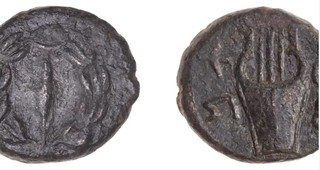 Two coins dating back some 2,000 years were found in the Binyamin region of the West Bank during an archaeological survey conducted by Bar-Ilan University, the university and the Binyamin Regional Council announced Tuesday.
Two coins dating back some 2,000 years were found in the Binyamin region of the West Bank during an archaeological survey conducted by Bar-Ilan University, the university and the Binyamin Regional Council announced Tuesday.
The coins date back to the period of the Jewish revolts against the Romans.
An archaeological survey does not involve extensive excavations but rather having researchers sample what is on the surface of an area or just very limited digging.
The Bar-Ilan survey was not limited to the cave, but also extended to the surrounding area.
One coin was discovered near Wadi Rashash, and another in a location known as Hirbet J'bait.
The artifact found in Hirbet J'bait was minted around 67 CE. It features a vine leaf and the Hebrew inscription Herut Zion (Freedom for Zion) on one side, and a goblet and the inscription Year Two
on the other. Just three years later, in 70 CE, the Romans would destroy the Temple in Jerusalem. Several other remains from that period, including a ritual bath, have been uncovered in the area.
The second coin dates back to the time of the Bar Kochba Revolt some 70 years later. It bears a palm branch surrounded by a wreath and the inscription LeHerut Yerushalayim (Freedom to Jerusalem) on one side and a musical instrument and the name Shimon
on the other – the first name of the rebellion's leader Bar Kochba.
Thanks also to Howard Berlin. Paul Horner and Aaron Oppenheim for passing this story along. -Editor
To read the complete articles, see:
2,000-year-old ‘Freedom to Zion' coins found in biblical heartland
(https://www.jpost.com/archaeology/2000-year-old-freedom-to-zion-coins-found-in-binyamin-region-673677)
2,000-year-old coins hailing ‘freedom' of Zion, Jerusalem uncovered in West Bank
(https://www.timesofisrael.com/2000-year-old-coins-hailing-freedom-of-zion-jerusalem-uncovered-in-west-bank/)
1980 WATFORD ANGLO SAXON COIN FIND
Arthur Shippee also passed along this story about a 40-year-old find of Anglo Saxon coins in Watford, England. -Editor
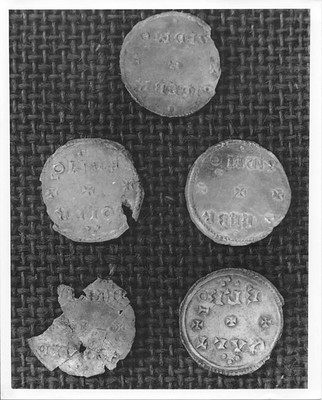 The Watford Observer has teamed up with Watford Museum and its curator Sarah Priestley to take a journey back to the town's past through items or places of historical significance.
The Watford Observer has teamed up with Watford Museum and its curator Sarah Priestley to take a journey back to the town's past through items or places of historical significance.
Number 45 in our 'history of Watford in 50 objects' is in fact five objects discovered 40 years ago - and they are rather special.
Sarah said: "The history of Watford as a town goes back to the Medieval times when the Abbot of St Albans was the lord of the manor, and a church was built here in Norman times and a market granted in the 12th Century. However before that we have plenty of evidence of people travelling through the area, including Anglo Saxon coins.
"In July 1980, Tony Gill discovered five silver pennies in Whippendell Wood. More than 1,100 years old, these coins date to 915-930AD, to the reigns of Edward the Elder and his son Athelstan. A further coin was discovered in the same area of the same age by Dennis Williams. The finds were reported to the local coroner's office and a formal identification was undertaken by the British Museum. An inquest made them treasure trove and two were kept by the British Museum and the other four purchased by Watford Museum with the assistance of the V&A Purchase Grant Fund.
"The site was properly excavated by the South West Herts Archaeological Society in June 1981 led by Tony Rawlins and Tony Gill. One more coin was found, dating to the reign of Athelstan and minted by Sigebrand the moneyer. Despite being again declared treasure trove, the finder waived his right to a reward and the coin was given to Watford Museum.
To read the complete article, see:
The 1,000-year-old Anglo Saxons coins found in Watford in 1980
(https://www.watfordobserver.co.uk/news/19428758.1-000-year-old-anglo-saxons-coins-found-watford-1980/)
MORE ON FRENCH COINS FOUND IN POLAND
Last month we discussed a hoard of silver coins found in Poland and speculated to be part of a ransom to save the city of Paris. Ken Spindler of San Diego passed along this New York Times article on the hoard. Thanks. -Editor
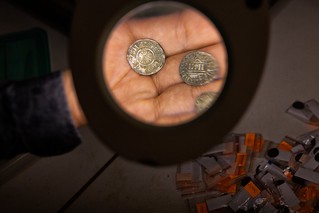 One theory, promoted by a Polish archaeologist leading the hunt for an explanation, is that the silver coins date from one of Europe's earliest and most traumatic episodes of armed extortion — when an invading Viking army laid siege to Paris in 845, and had to be paid off with more than two tons of silver to prevent it from destroying the city.
One theory, promoted by a Polish archaeologist leading the hunt for an explanation, is that the silver coins date from one of Europe's earliest and most traumatic episodes of armed extortion — when an invading Viking army laid siege to Paris in 845, and had to be paid off with more than two tons of silver to prevent it from destroying the city.
The Vikings — Scandinavian warriors greatly feared because of their unruly habits and military prowess — later systematized what became an elaborate protection racket in the 11th century by imposing taxes in England known as Danegeld, tribute payments in return for safety.
What happened to the huge ransom they received for sparing Paris in 845, however, has always been a mystery.
The Vikings had a major trading post called Truso just 30 miles from Biskupiec, the Polish village where the coins were found. That has led some experts to speculate that the silver extorted in Paris made its way there and then spread into nearby areas as part of a flourishing Baltic-region trade, whose main commodity was slaves.
This is an exceedingly rare and surprising find,
said Lukasz Szczepanski, the head of archaeology at a regional history museum in the Polish town of Ostroda. We previously only knew what happened in Paris from written sources, but now, suddenly, we have it in a physical form.
Others are skeptical. Simon Coupland, a British expert, noted that the coins found in Biskupiec seemed to date from several years before the 845 siege.
But, he added, they could be part of the booty extracted by the Vikings during earlier attacks on the western part of the empire established by Charlemagne, or simply the proceeds of regular trading and raiding by the Vikings.
Mr. Szczepanski acknowledged that his theory that the coins were part of the ransom the Vikings extorted to spare Paris was merely a working hypothesis.
A clearer picture, he said, would emerge after a chemical analysis of the coins and a full excavation of the site where they were discovered by the local treasure hunter, Przemyslaw Witkowski, and a fellow scavenger, Maciej Malewicz.
To read the complete article, see:
Medieval French Coins Unearthed in Poland? A Mystery Begins
(https://www.nytimes.com/2021/07/12/world/europe/medieval-french-coins-poland.html)
To read the earlier E-Sylum article, see:
CAROLINGIAN SILVER COIN HOARD FOUND IN POLAND
(https://www.coinbooks.org/v24/esylum_v24n25a26.html)
THE PIVOTAL YEARS FOR COIN COLLECTING
Dave Bowers published a nice article on CoinUpdate about pivotal years for coin collecting in the United States — 1857 and 1858. There's something here for numismatic bibliophiles as well. -Editor
The Mint Act of February 21, 1857, eliminated the copper half cent and cent and provided for a new, small cent of 88 grams' weight, made of copper-nickel alloy. The new Flying Eagle cents were struck in large quantities (amounting to 7,450,000 for the entire 1857 year) and were initially distributed on May 25.
On the same day, Mint Director James Ross Snowden wrote to Secretary of the Treasury James Gunthrie:
"The demand for them is enormous…We had on hand this morning $30,000 worth, that is 3,000,000 pieces. Nearly all of this amount will be paid out today. The coinage will go forward, however, at a rate of 100,000 or more pieces per day, and the demand will be met as well as we can."
By 1858 the stage was set for a cent-collecting fever. Thousands of citizens cherished their sparkling new Flying Eagle cents while contemplating the disappearance of the familiar copper pennies
of childhood days. Pocket change and cash drawers were searched, and soon quite a few collectors had strings of such coins dating all the way back to the first year of issue, 1793, but perhaps lacking the rare 1799, 1804, and 1823. The earlier coins were apt to be well worn, with dates and designs barely visible. The most recent ones showed blushes of orange Mint color.
Edward Cogan, an art dealer in Philadelphia was asked to sell a friend's collection of copper cents, and sent out listings, inviting bids by mail (closing on November 1, 1858). Bids were received from 19 people. A 1793 Chain cent sold for $12.67, a 1793 Wreath cent brought $5.13, a 1793 Liberty Cap realized $7.25, a 1799 cent sold for $7, and an 1804 brought $5.50, among others. This was exciting news; it was picked up by the local papers and was soon reprinted throughout the East. Cogan was deluged with letters from people wanting to buy and sell coins. Soon, he decided to become a professional numismatist.
On January 1, 1858, the Philadelphia Numismatic Society was formed, becoming the first such group in the United States. In March 1858, teenager Augustus B. Sage and friends founded the American Numismatic Society in New York City. By late summer there were nearly a dozen dealers active in the United States, including, in New York alone the venerable John Allan and three young men: Augustus Sage, Henry Bogert, and John Curtis.
Proof coins became popular in 1858, and an estimated 210 sets of silver denomination coins were sold, plus a larger number of copper-nickel Flying Eagle cents. Proof gold coins were available singly, and the dollar was the most popular denomination in this metal, probably with a sale of a few dozen or so.
Also in 1858, the first important numismatic book was published in America, An Historical Account of American Coinage, by John H. Hickcox. The slim volume included 151 numbered pages plus five pages of illustrations, these by John E. Gavit of Albany, a well-known engraver of banknotes. Hickcox had spent some time in research and had contacted historical societies and several numismatists as well as Mint Director Snowden. Only 200 regular copies were printed, and these were mostly sent to libraries and historical societies. For collectors, there was no single, readily available source for information, and many still sought the elusive copper cent of 1815, not realizing that none were minted that year.
Today, collectors can refer to the Guide Book to learn about mintage and pricing as well as information about varieties and grading.
To read the complete article, see:
Bowers on Collecting: The pivotal years for coin collecting — 1857 and 1858
(http://news.coinupdate.com/bowers-on-collecting-the-pivotal-years-for-coin-collecting-1857-and-1858/)
THE GEORGE JUNIOR REPUBLIC
The New England Numismatic Association's official publication is NENA News. John Ferreri offered to share some articles with E-Sylum readers; thanks! Here's a token article that caught my eye - it's from the June 2021 issue. Written by Bob Hewey, it's about numismatic items issued by the George Junior Republic. Here's a lengthy excerpt - see the complete article for references and more images. -Editor
The Junior Republic concept, with the motto Nothing Without Labor
became reality in 1893 when William R. George established his George Junior Republic (GJR) on his farm near Freeville, NY. It was his belief that boys should learn good
citizenship not just by being taught, but by through actual self-government in which the resident boys would take part in the operation of the community, earning their keep by working
the farm and maintaining the facilities. It also included making and enforcing their own laws
, all under adult supervision, of course.
One of the trustees of the GJR was the Rev. John Hutchins, pastor of the Congregational Church in Litchfield, Connecticut. He would speak glowingly of the Republic to others in his town. One of these listeners was Miss Mary Buel, who gave her farm, where she had lived for 87 years, and some funds for the establishment of a branch of the GJR in Litchfield.
In June 1904, eleven boys ranging in age from ten to early teens went to Freeville to live and to observe the operation of the GJR. They were under the supervision of John A. Parker, Superintendent of the Freeville Republic. In April 1905, they travelled to Litchfield to establish the Connecticut Branch. The Republic selected its citizens very carefully, based on referrals from parents, relatives, friends, orphanages, juvenile courts, truant officers, etc.
Not included were boys with criminal records or mental deficiencies. They chose boys who had initiative and strength but who were at risk due to adverse home or social conditions. They were selected because it was thought they would do well in the GJR model and become the best of citizens.
In late 1914, token money in aluminum was produced and put into circulation at the Litchfield Republic. On the common obverse was the image of a boy's head with the words Connecticut George Junior Republic arching over, the words Nothing Without Labor near the boy's neck and the date 1913 below. The reverse held an eagle with the denomination above its head between its outstretched wings. Denominations are known in 1, 5, 10, 25 and 50 cents and One Dollar. A total face value of $1000 worth of tokens were struck. All except the one cent piece were in graduated sizes. The one cent and five cent pieces were of the same size.
Wages for their labor were paid to the boys with these tokens. After their weekly bills were paid (per diem costs,e.g. room and board, per boy were around $1), any surplus could be exchanged for U.S. Currency at the end of each week.
In March of 1929 paper notes were issued by the Connecti- cut Junior Republic. No information is available about the quantity or denomination of notes issued at that time.
There is some evidence that another token type was used,
represented by a single large One Dollar / $1 / Non-Negotiable
piece from a CTJR former director's materials. By the 1950s the
CTJR token money was no longer in use and U.S. currency was the
sole means of payment. The tokens and notes are very collectible
and rarely encountered.
The Connecticut Junior Republic still exists and serves many more young people than ever before. Over the years, CJR has evolved from a single location and program model serving up to 84 at-risk boys and young men to an organization offering a comprehensive continuum of care that helps more than 1,400 boys, girls, and families annually through a diverse spectrum of residential, community-based, education and behavioral health services in 11 locations across Connecticut.
For more information on the New England Numismatic Association, see:
https://www.nenacoin.org/
MOVING THE MEDALLIC ART COMPANY ARCHIVES
I don't believe we've published this before - back in April Dr. Jesse Kraft of the American Numismatic Society published an ANS Pocket Change blog about the laborious move of the Medallic Art Company archives, purchased by the Society in 2018. Here's an excerpt, but be sure to see the complete article online. -Editor
As many of you know, the American Numismatic Society purchased the archives of the Medallic Art Company (MACO) at a bankruptcy auction in 2018. The sheer size of this purchase, however, did not allow for the tale to end so quickly. Within weeks of the landmark purchase, components of the collection were shipped to various corners of the country. The medals and paper archives from MACO moved to the ANS headquarters in New York City; the dies and hubs were transferred to Medalcraft Mint, Inc., in Wisconsin, who is generously storing them for the ANS at the moment; and the galvanos, die shells, and plasters took a short drive to Mound House, Nevada, less than five miles from Dayton—where MACO last operated.
By early 2020, with a good portion of the medals catalogued, the ANS began to think about the parts of the collection that remained out of reach. While we were headlong into making plans, however, the COVID-19 pandemic altered reality for most people and put a halt to everything that we hoped would happen. Along with the rest of the world, the ANS heeded to CDC guidelines, masked up, and waited for life to find some semblance of normalcy.
The time has come, however, for the next chapter in the MACO saga to begin! With the third and most recent wave behind us, vaccines becoming more-readily available, and infection rates dropping by the day, the ANS is in the planning stages to transfer all of the galvanos, die shells, and plasters from Mound House to Manhattan.
Unlike the galvanos that many numismatists are already familiar with, these were not meant to be sold to interested buyers, but are all production galvanos, made for the sole purpose of creating dies to strike medals. Nearly the entire run of MACO products is represented in production-galvano format. To put quantity of this portion of the collection into perspective, just the material in Mound House equates to about 17,000 objects that are stored in roughly 1,400 boxes, which are situated on about 90 pallets and will likely take four (4) tractor trailers to completely move across the country. Given the size, these early stages have been no easy undertaking and involved three major tasks: organizing what we know exist to efficiently absorb the collection as it arrives, finding a location to store the material, and locating a long-haul trucking company.
The first step in the process was to organize the pieces that we have records for. To do this, I had nothing else but to rely on more than 20,000 photographs that were taken as the collection was packed up in 2018. At the time, knowing that this would likely be the last that any of this material would be seen for at least a few years, the ANS hired Lou Manna Photography, of Reno, Nevada, to image as many as he could.
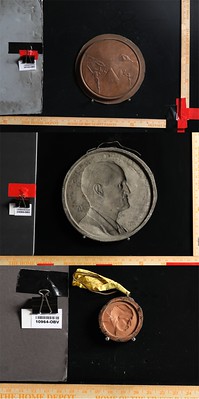 Some amazing pieces were uncovered during this process, too. Some important pieces included the galvanos for a series of medals that represent the Twelve Tribes of Israel as designed by Salvador Dalí; those for the 1940 medal of Clyde Trees—the manager of MACO who transformed the small company into an industrial medallic art factory—as sculpted by John Ray Sinnock; and nearly forty different galvanos that portray members of the Arapahoe, Cheyenne, Crow, Kikapoo, Oglala Sioux, Osage, Pawnee, and Wichita nations sculpted by Edward Sawyer between 1904 and 1912.
Some amazing pieces were uncovered during this process, too. Some important pieces included the galvanos for a series of medals that represent the Twelve Tribes of Israel as designed by Salvador Dalí; those for the 1940 medal of Clyde Trees—the manager of MACO who transformed the small company into an industrial medallic art factory—as sculpted by John Ray Sinnock; and nearly forty different galvanos that portray members of the Arapahoe, Cheyenne, Crow, Kikapoo, Oglala Sioux, Osage, Pawnee, and Wichita nations sculpted by Edward Sawyer between 1904 and 1912.
This last group is among the most important groups of Native American ethnographic renderings in any medium, perhaps second only to the paintings by George Catlin in the 1830s. While many of the MACO galvanos are of extreme importance or artistic mastery, these truly are priceless American artifacts.
To read the complete article, see:
FROM MOUND HOUSE TO MANHATTAN, PART I
(http://numismatics.org/pocketchange/mound/)
LOOSE CHANGE: JULY 18, 2021
Here are some additional items in the media this week that may be of interest. -Editor
On Facebook Dennis Tucker passed along this video interview with Ron Landis of the Gallery Mint. -Editor
To watch the video, see:
Interview with Master Engraver Ron Landis
(https://www.youtube.com/watch?v=h8Fv6RfiRVc)
And speaking of Dennis Tucker, he published a new article on CoinUpdate about children's books relating to numismatics. -Editor
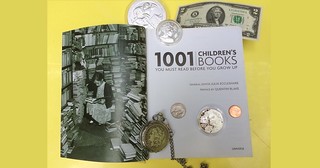 I've read thousands of books to my daughter over the past few years (starting even before she could walk or talk). So far I've found a few kids' books that have coins, stamps, and similar collectibles as plot elements. There are even some with coins as a main theme. (I'm talking about literary books here, as opposed to reference works or collector guides.)
I've read thousands of books to my daughter over the past few years (starting even before she could walk or talk). So far I've found a few kids' books that have coins, stamps, and similar collectibles as plot elements. There are even some with coins as a main theme. (I'm talking about literary books here, as opposed to reference works or collector guides.)
One important piece of advice I would give any aspiring author: Make sure you get your facts right. Numismatics is a complex subject—so complex that even broad, apparently simple statements should be double-checked by a numismatist. (Among adult writers, I love Stephen King, but he often gets coin-related details wrong in his horror stories—sometimes amazingly wrong! Like the four-and-a-half-ounce double eagles in his short story Word Processor of the Gods,
in Skeleton Crew.
To read the complete article, see:
Notes Published: More on children's books and coin collecting
(https://news.coinupdate.com/notes-published-more-on-childrens-books-and-coin-collecting/)
The Giant Gold coin is still missing, but defendants in the Berlin museum theft are still jailed and just lost their latest appeal. -Editor
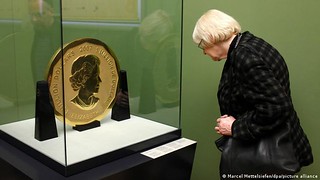 German federal court on Tuesday rejected the appeal of two defendants who had been jailed for stealing a massive gold coin from Berlin's Bode Museum.
German federal court on Tuesday rejected the appeal of two defendants who had been jailed for stealing a massive gold coin from Berlin's Bode Museum.
The court in the city of Leipzig concluded that there were no "legal errors to the disadvantage of the defendants" in their February 2020 sentencing and, as such, their prison terms were found to be legally binding.
In total, three men were convicted of stealing the coin. Two defendants, aged 23 and 21, were tried as juveniles and were handed four and a half years in prison. The third convicted defendant, a 21-year-old, was sentenced to three years and four months.
To read the complete article, see:
Berlin gold coin heist defendants lose appeal
(https://www.dw.com/en/berlin-gold-coin-heist-defendants-lose-appeal/a-58254269)
Bibliophiles will recoil at this one, but you have to admit it's funny. Thanks to Paul Horner for passing along this library horror story. -Editor
A year and a half ago, I found myself in an archive room at the London School of Economics, staring at 150-year-old documents complete with swirly handwriting and a red-wax seal. My mind flicked back to a few weeks earlier, when I'd gotten one of my occasional nosebleeds, and I had a random yet horrifying thought: What if my nose starts bleeding on one of these irreplaceable pages? What would happen if I ruined them?
I had the chance to discuss my fears at my next research stop, the Centre for Research Collections at the University of Edinburgh's main library. When a smoke alarm interrupted my silent, solitary scholarship, another researcher invited me to her office for a cup of tea. The alarm got us talking about archival damage, and when I shared my nosebleed anxieties, she told me that a friend of hers had once sneezed on an illuminated manuscript. As the friend instinctively began wiping, the ink smudged. The more they wiped, the worse it got; the scene was practically the same nightmare that had been depicted on the old British TV show Mr. Bean.
To read the complete article, see:
An Archivist Sneezes on a Priceless Document. Then What?
(https://www.msn.com/en-us/news/us/an-archivist-sneezes-on-a-priceless-document-then-what/ar-AAM7knM)

